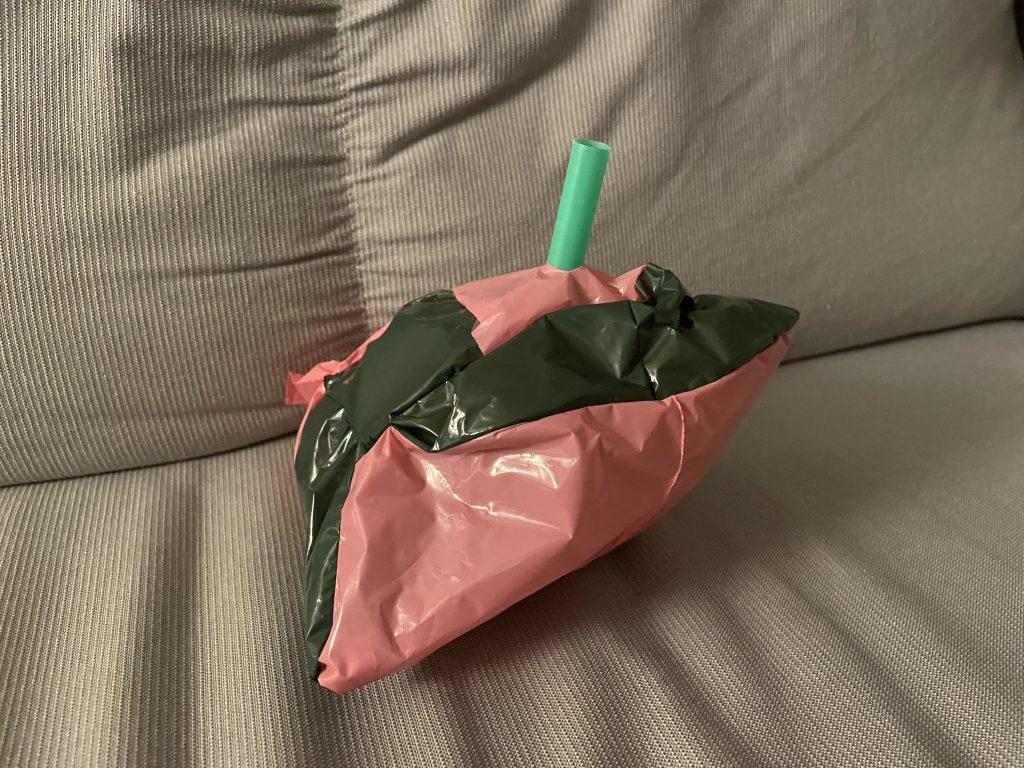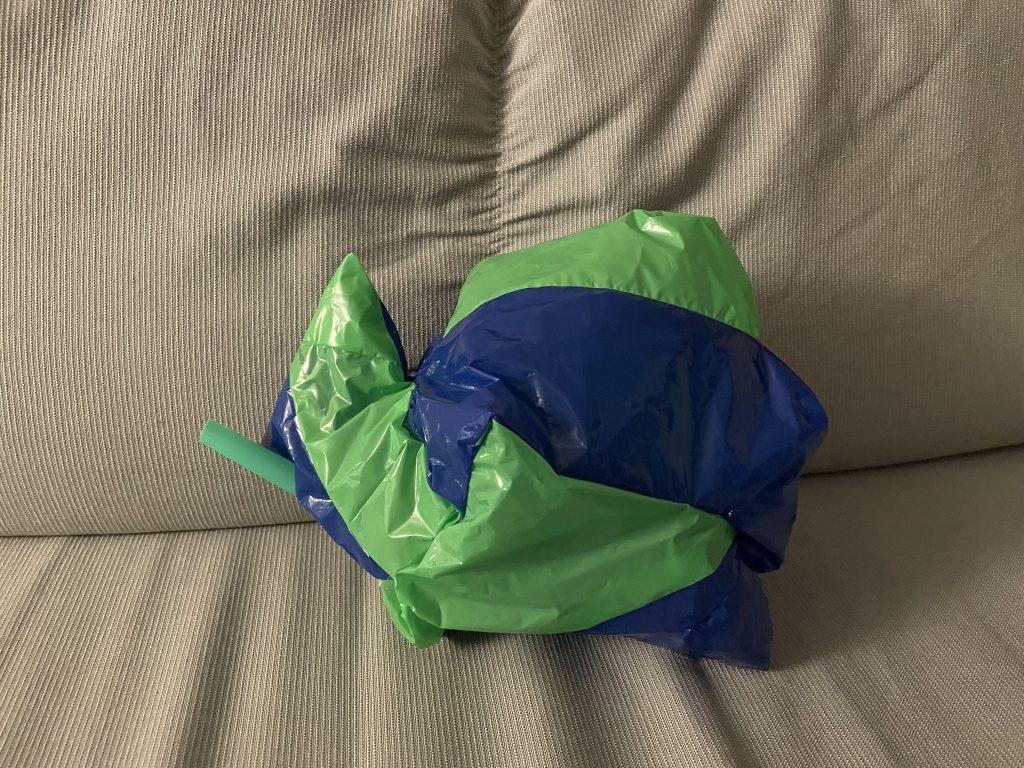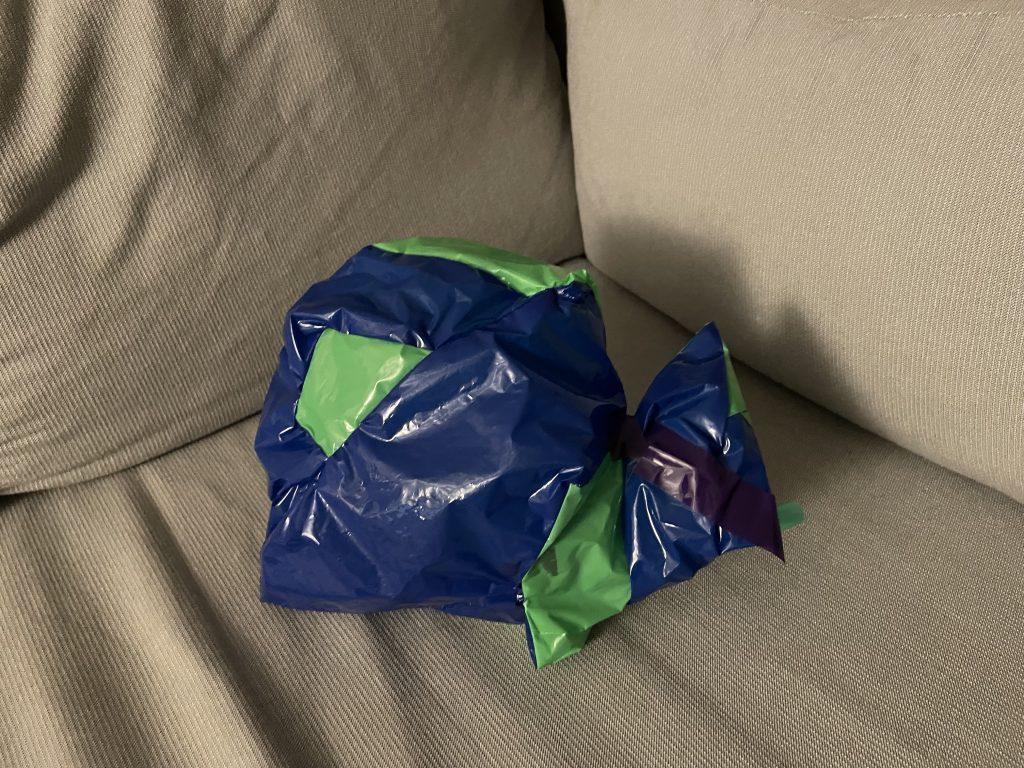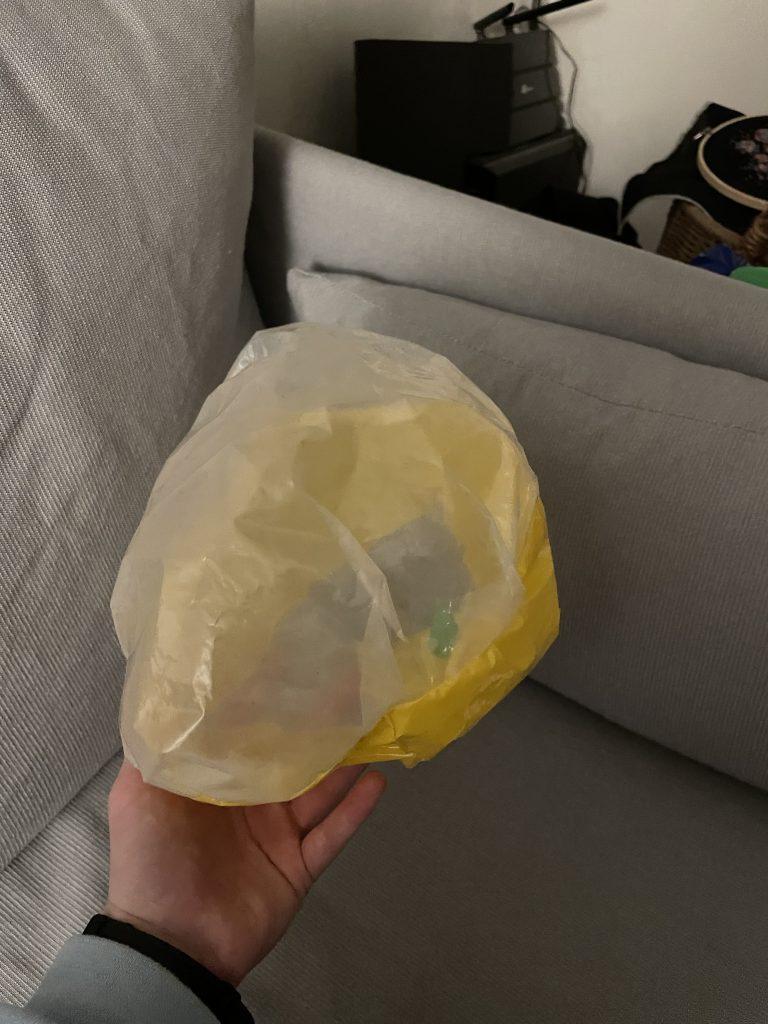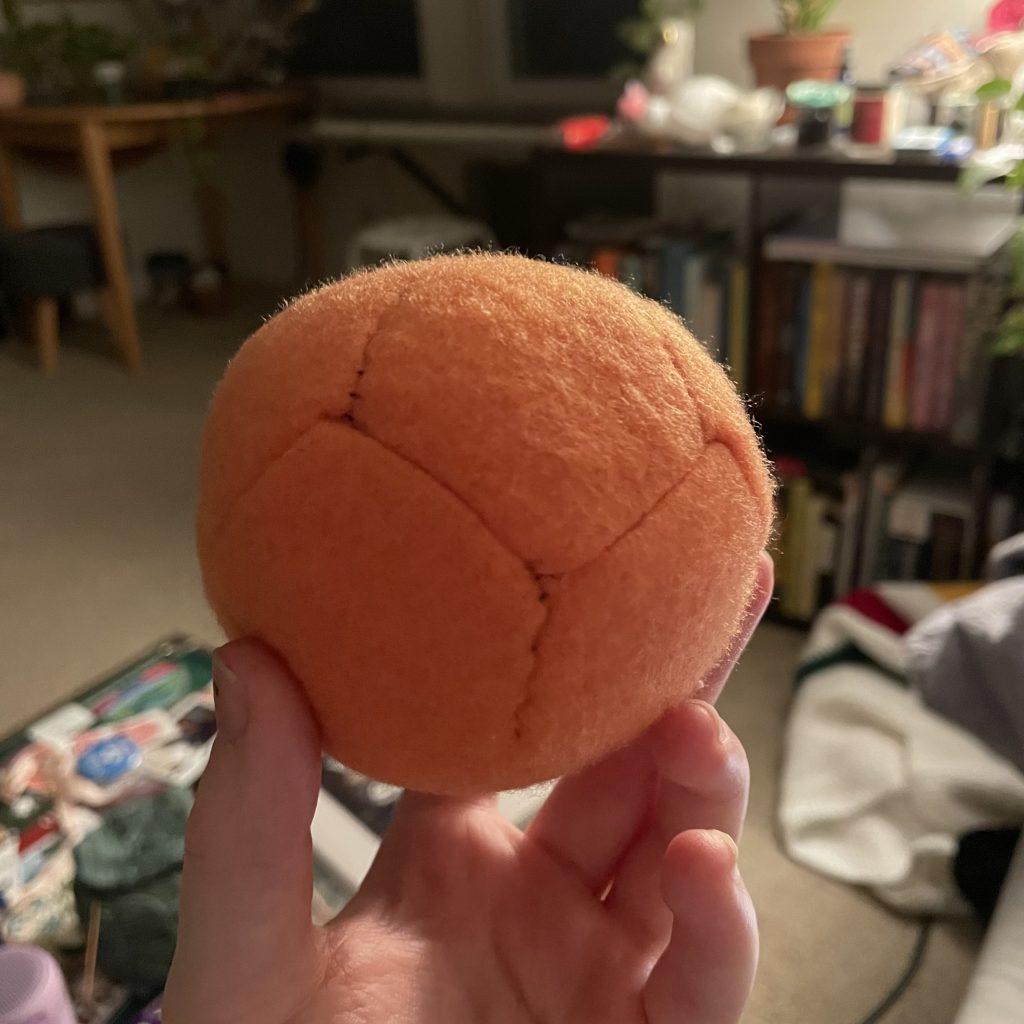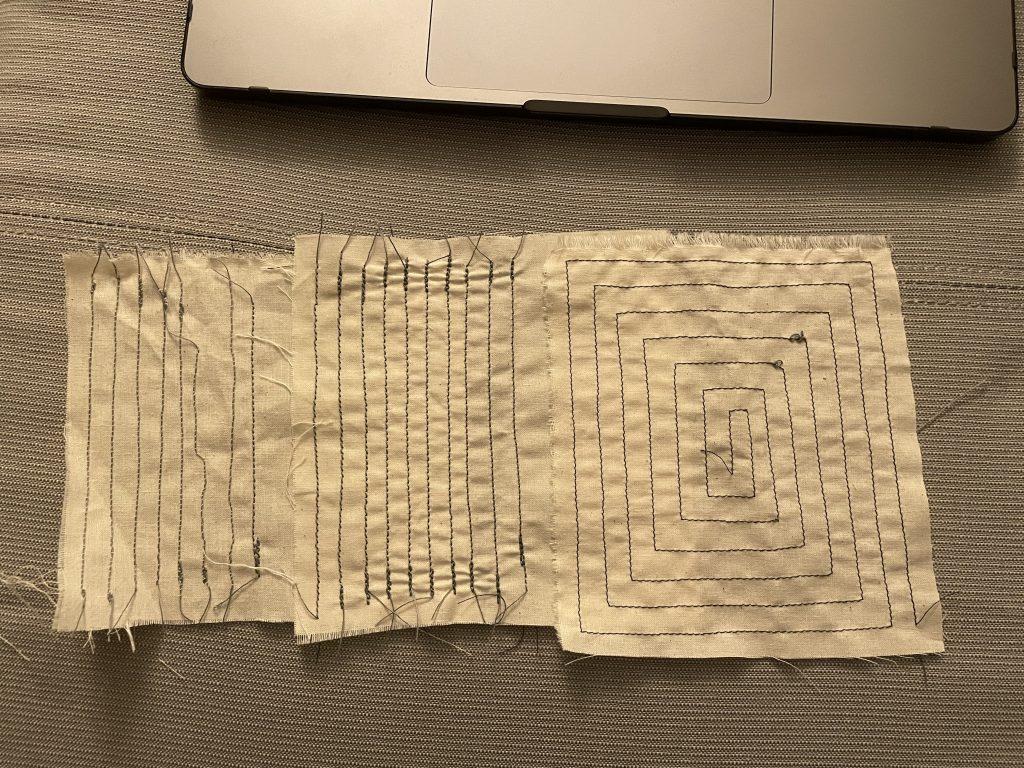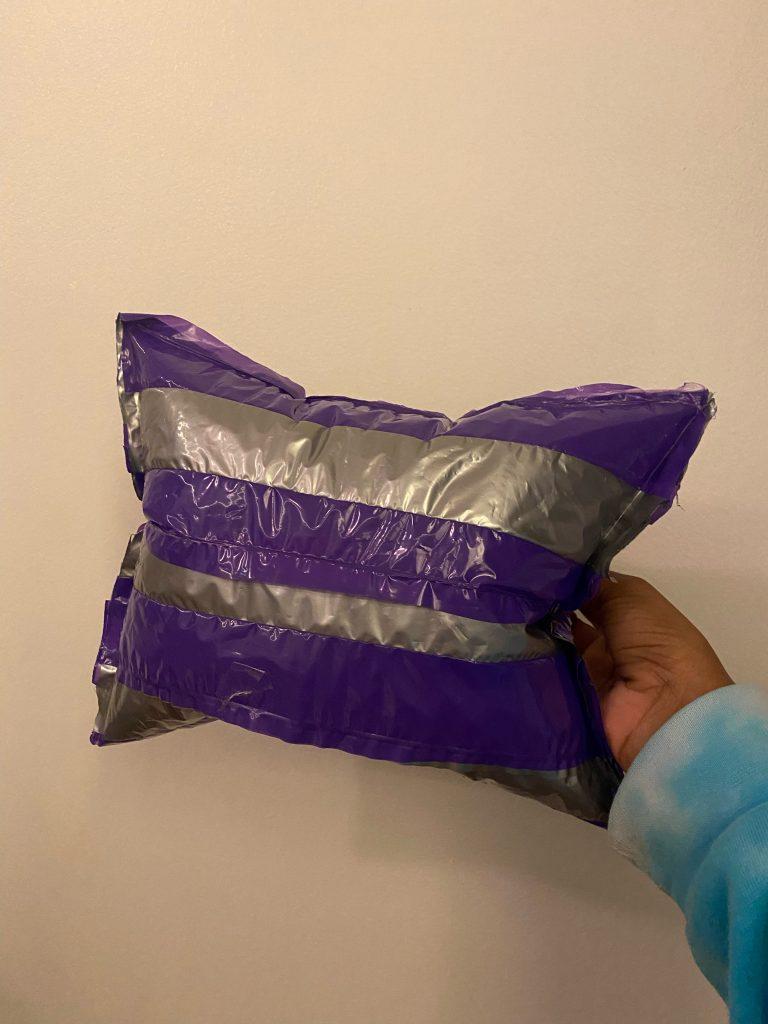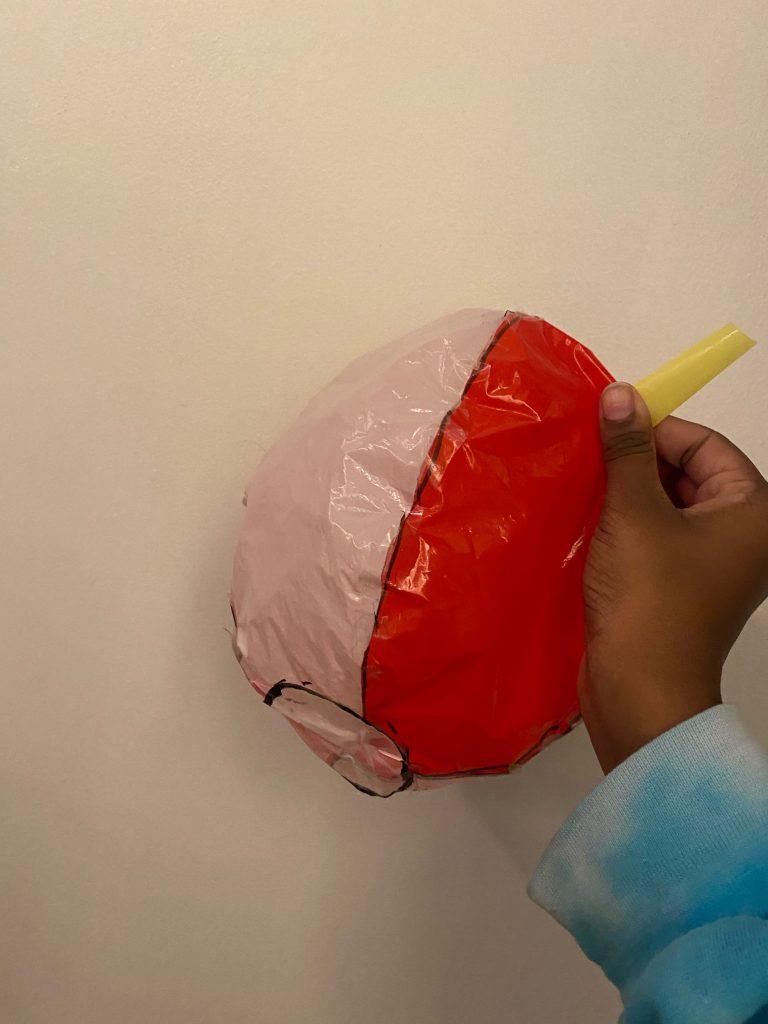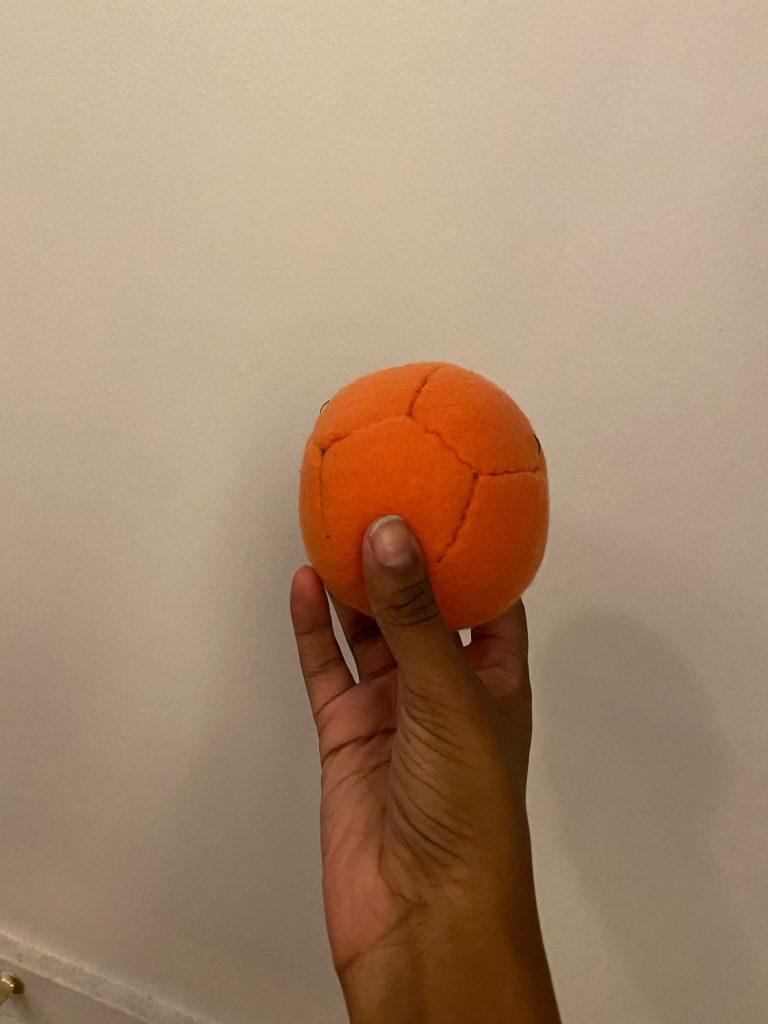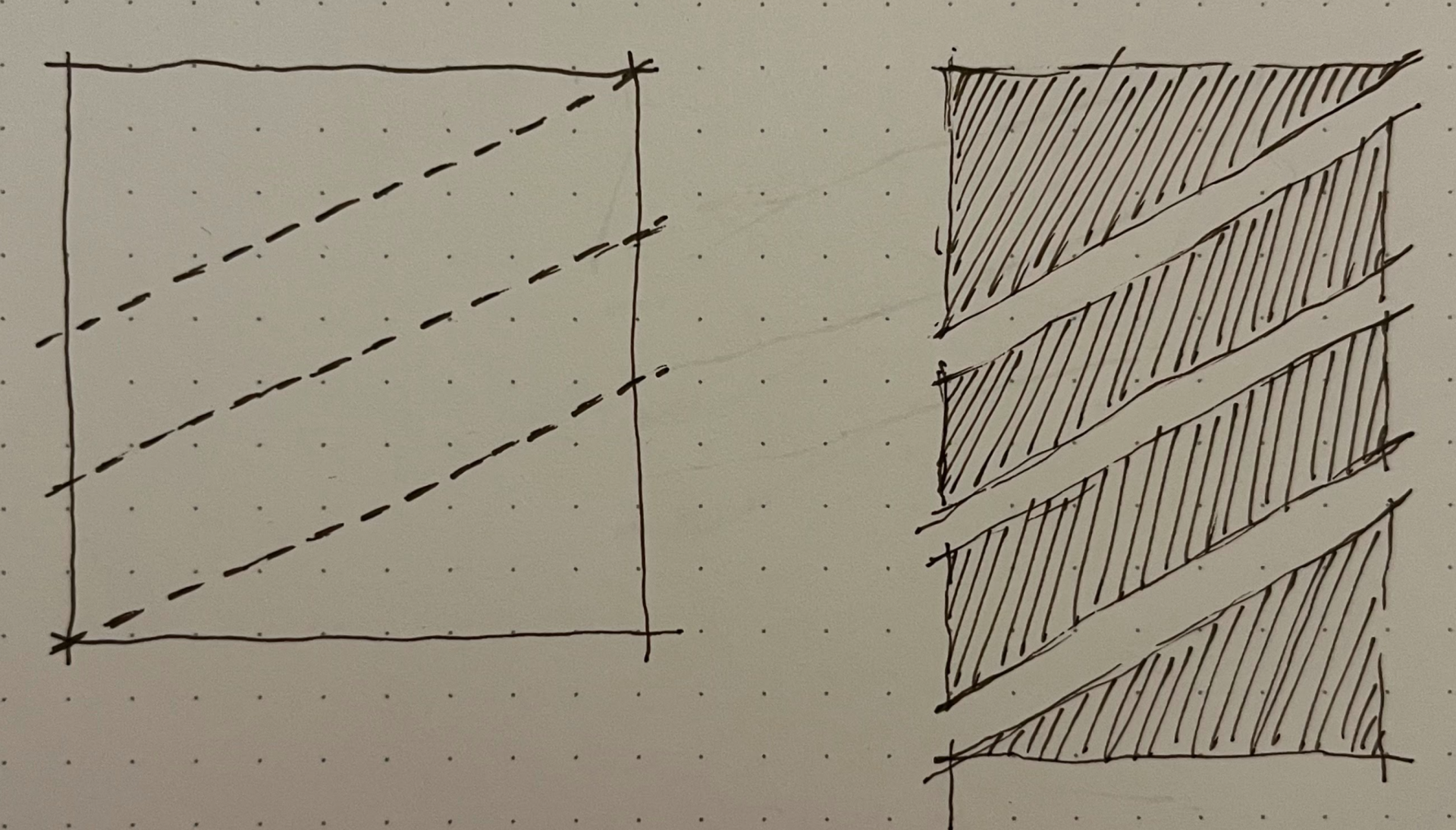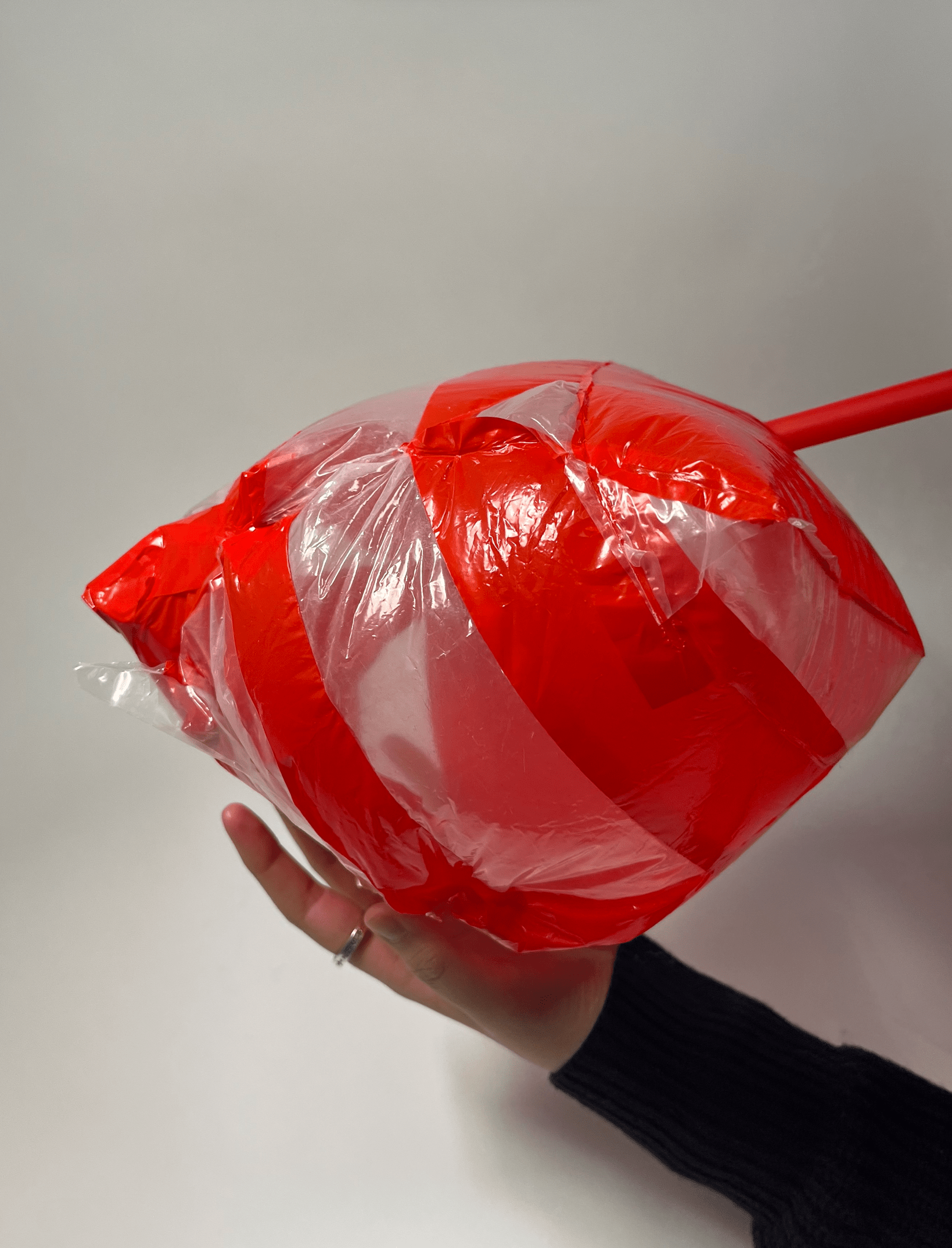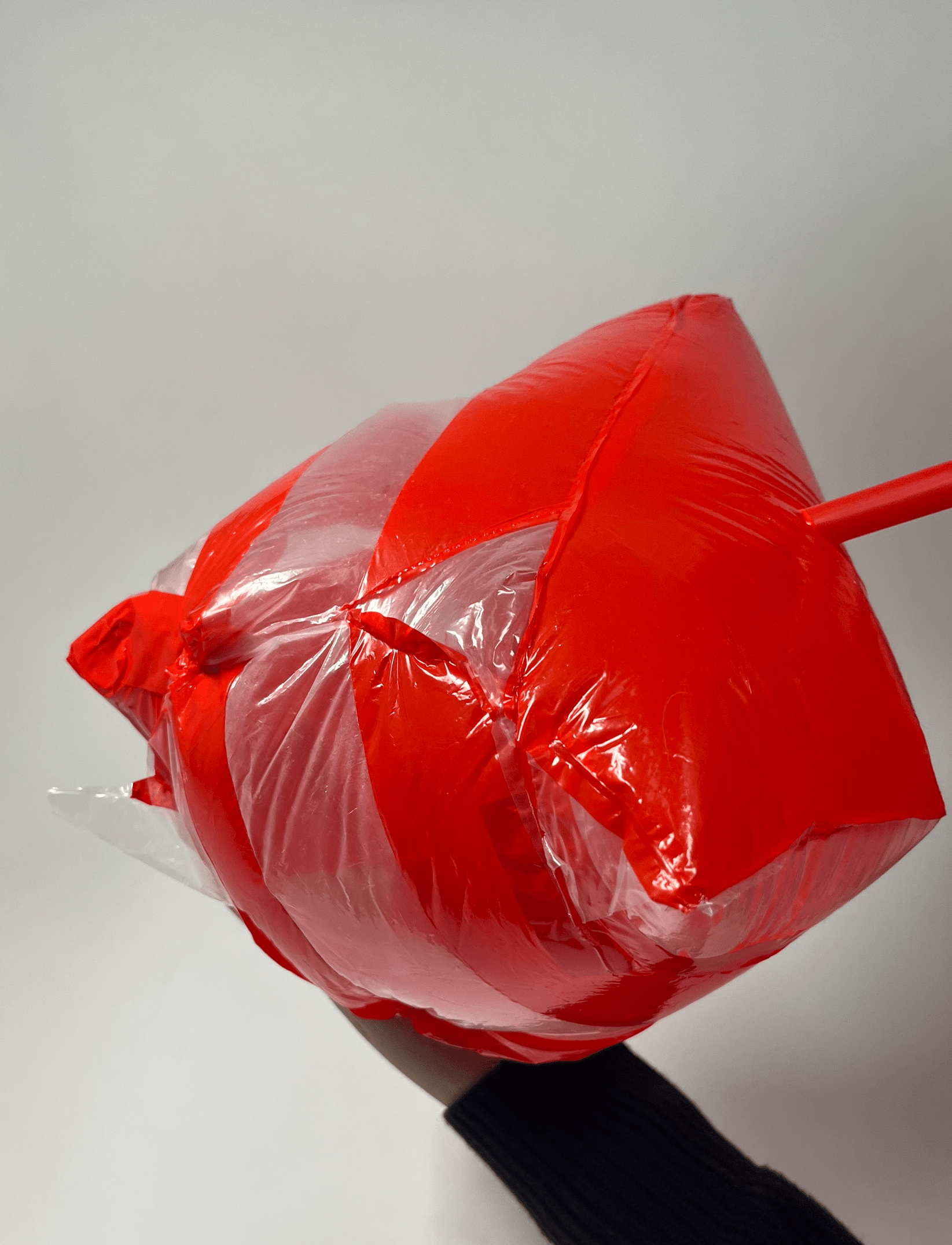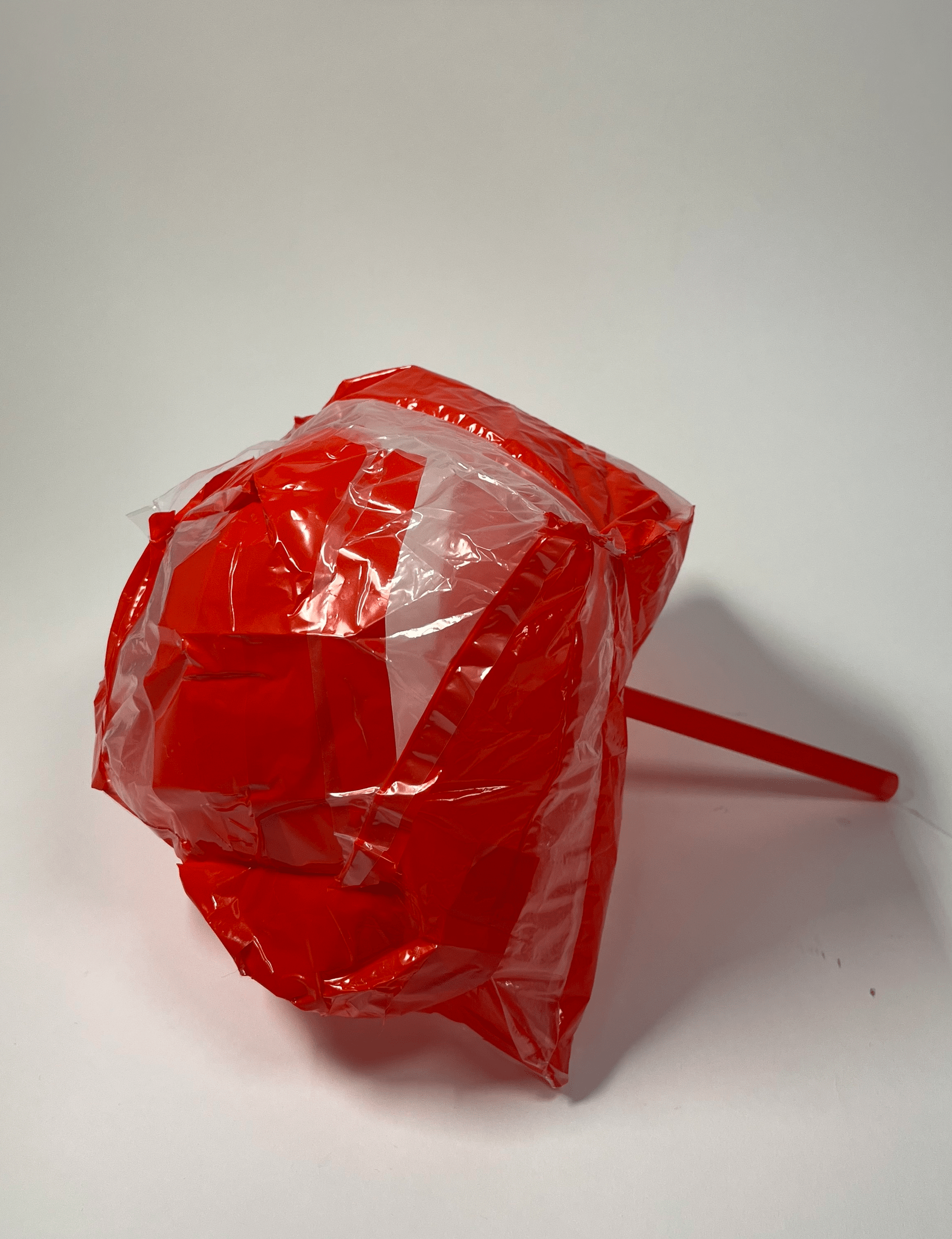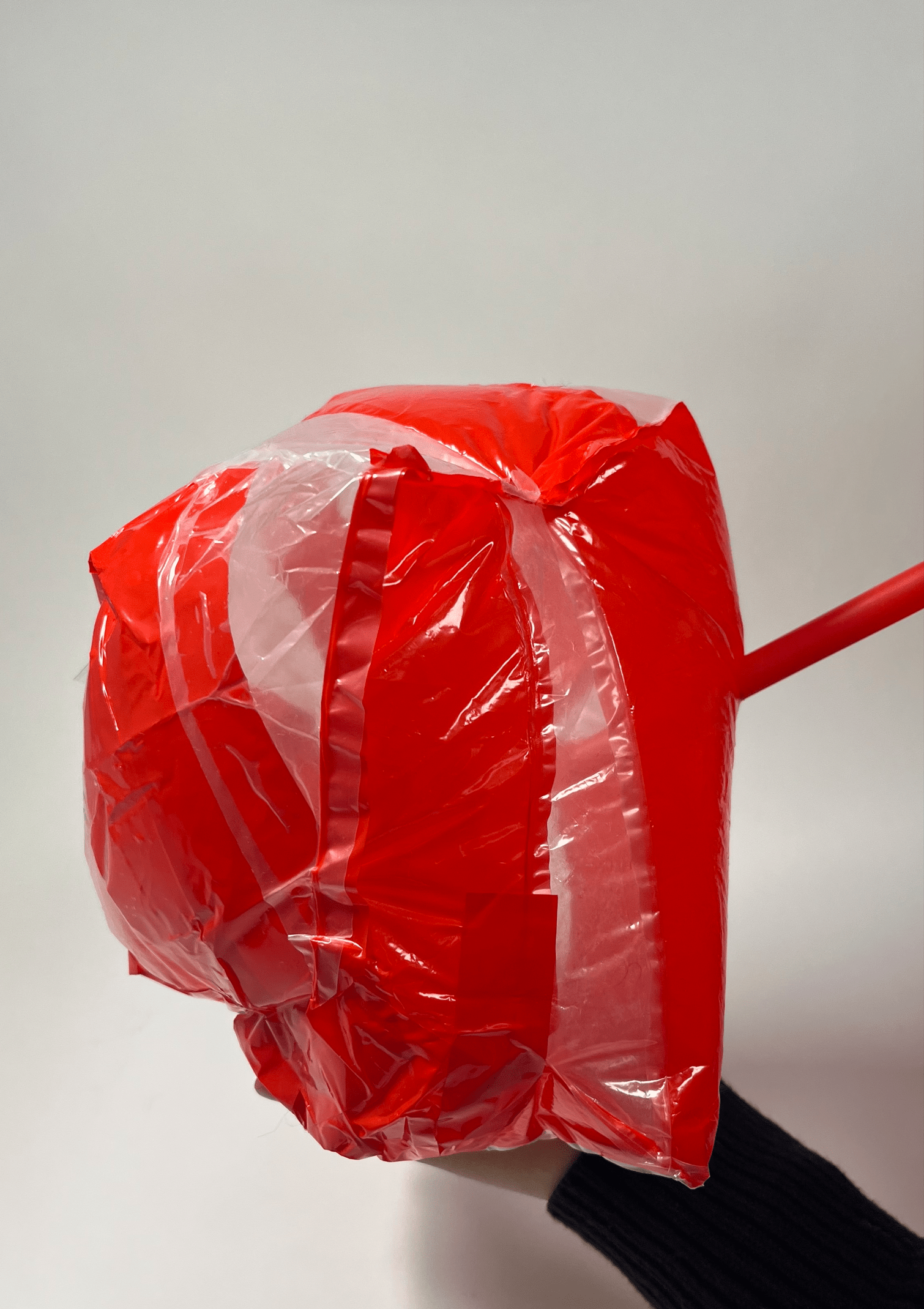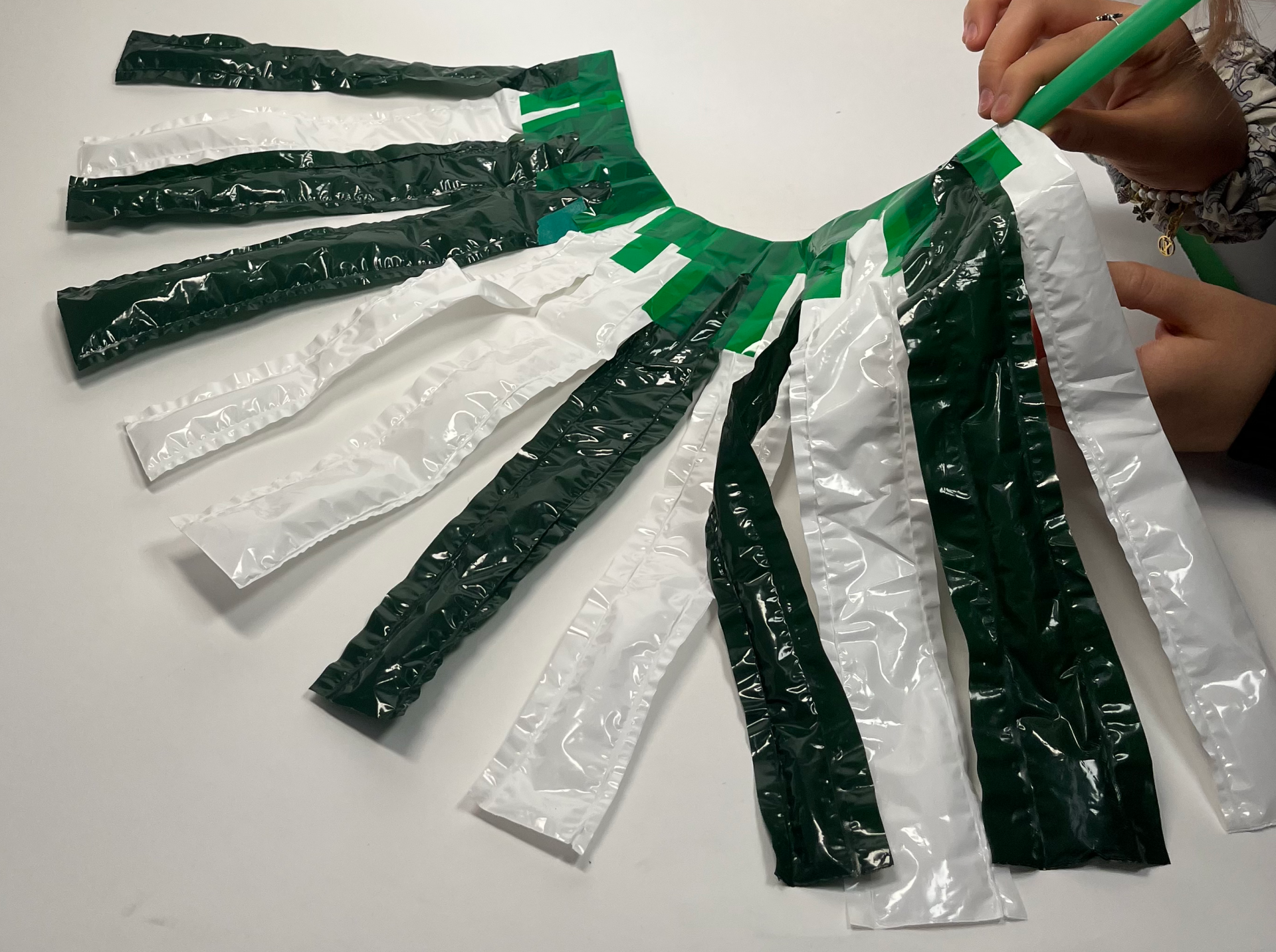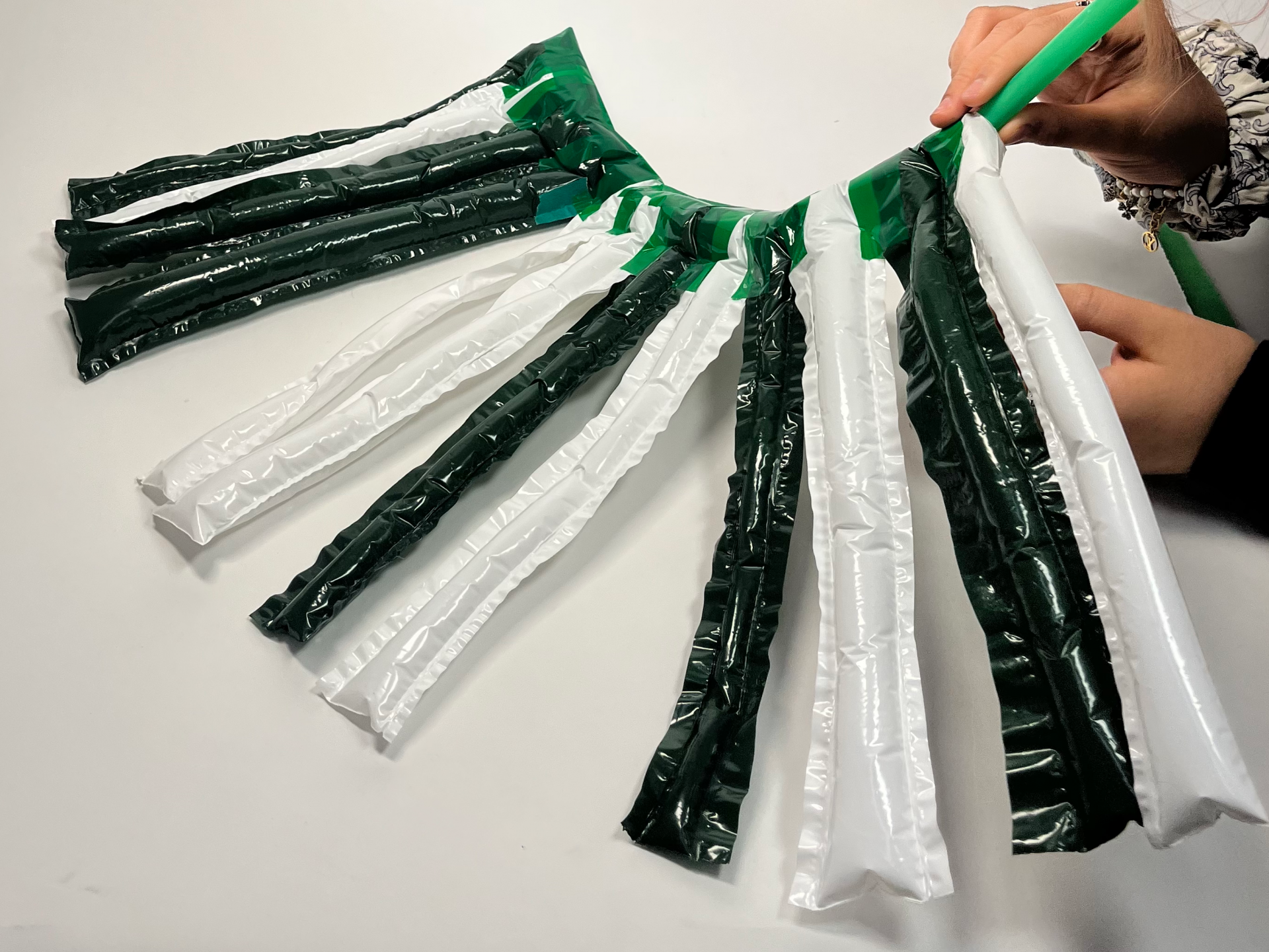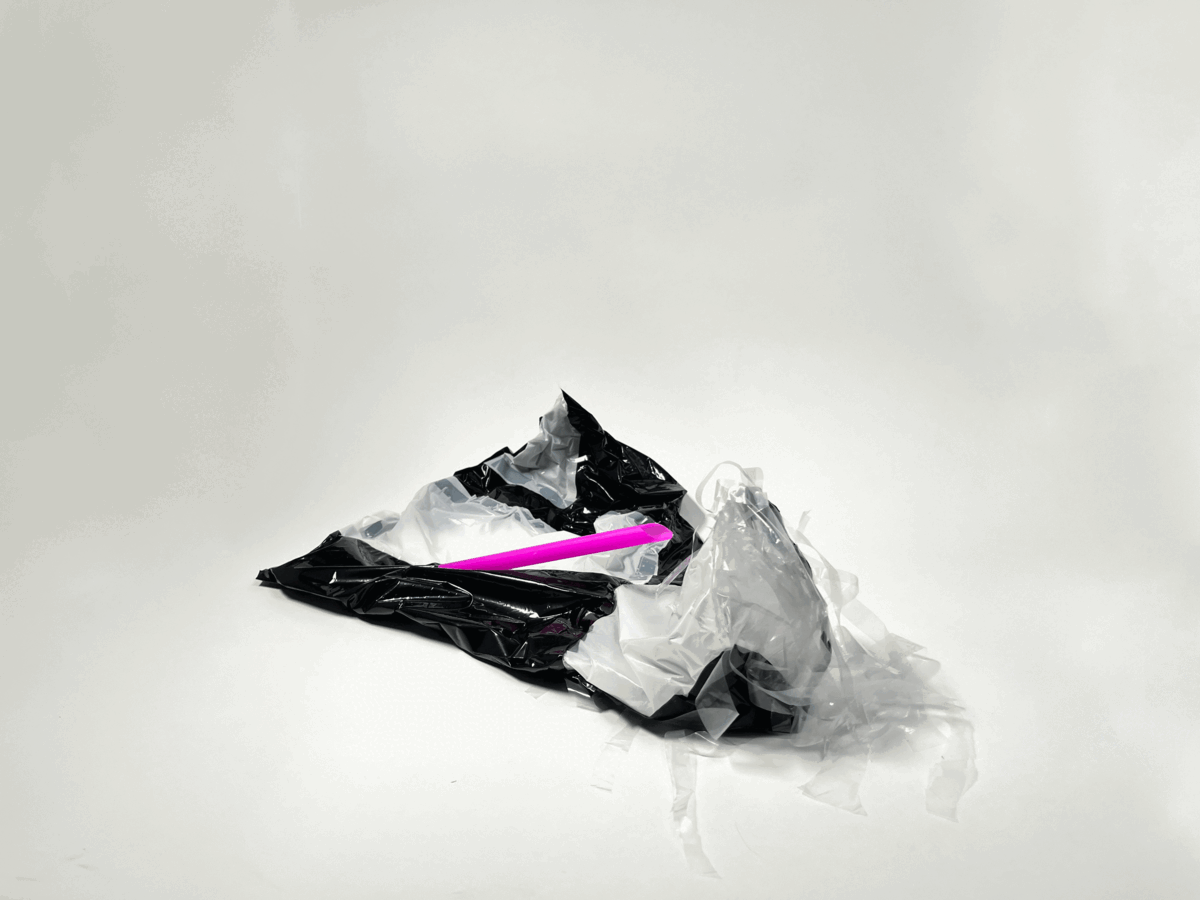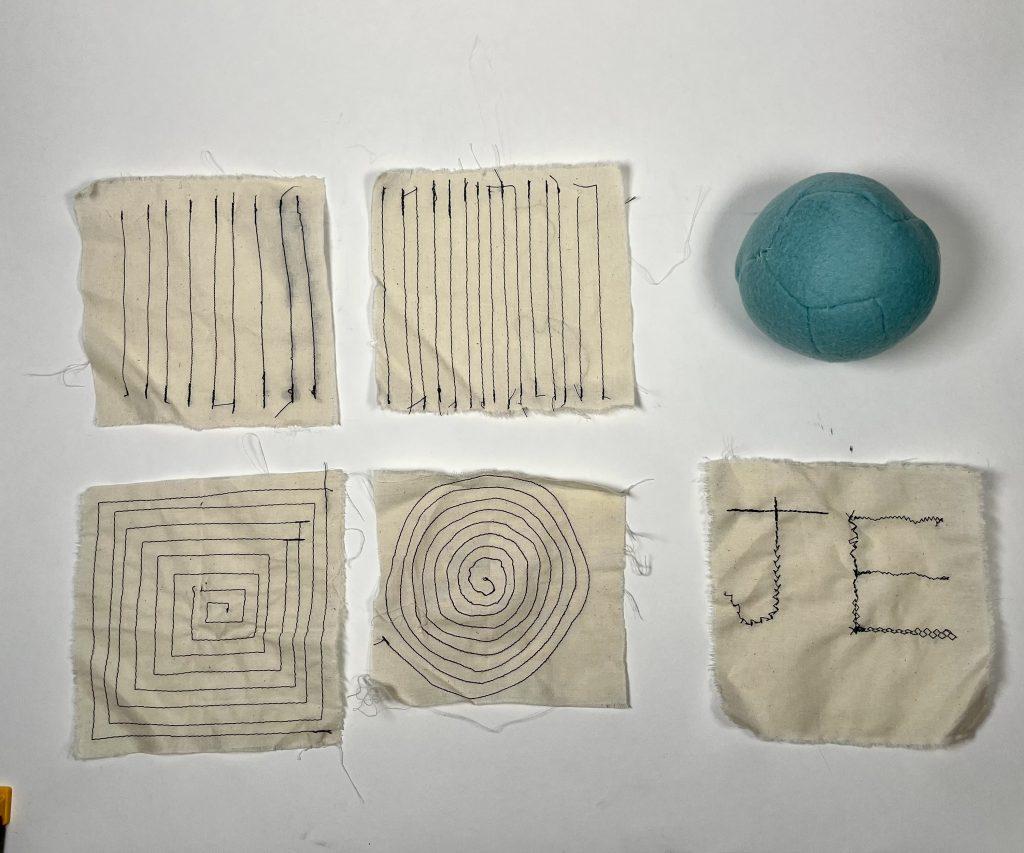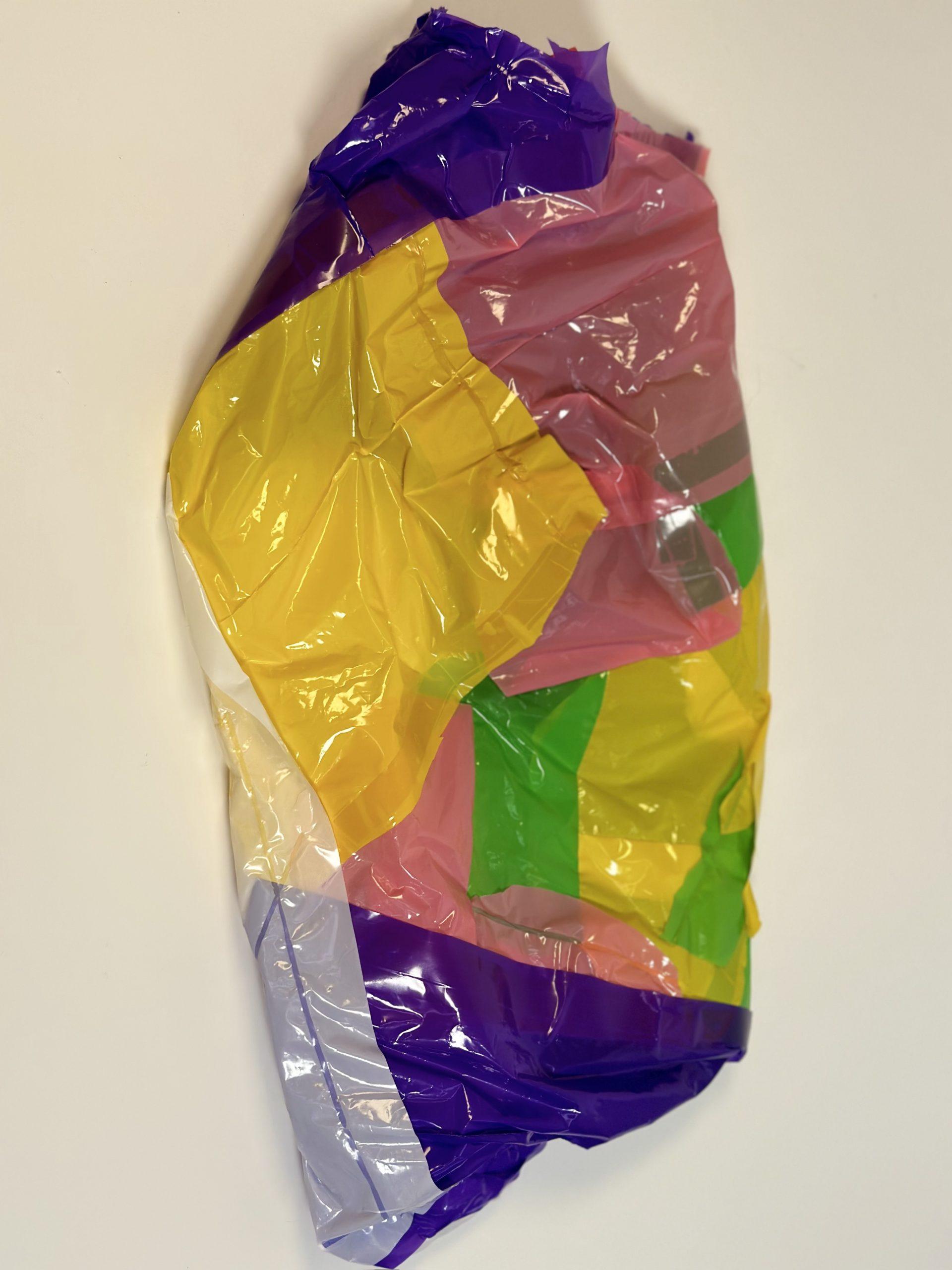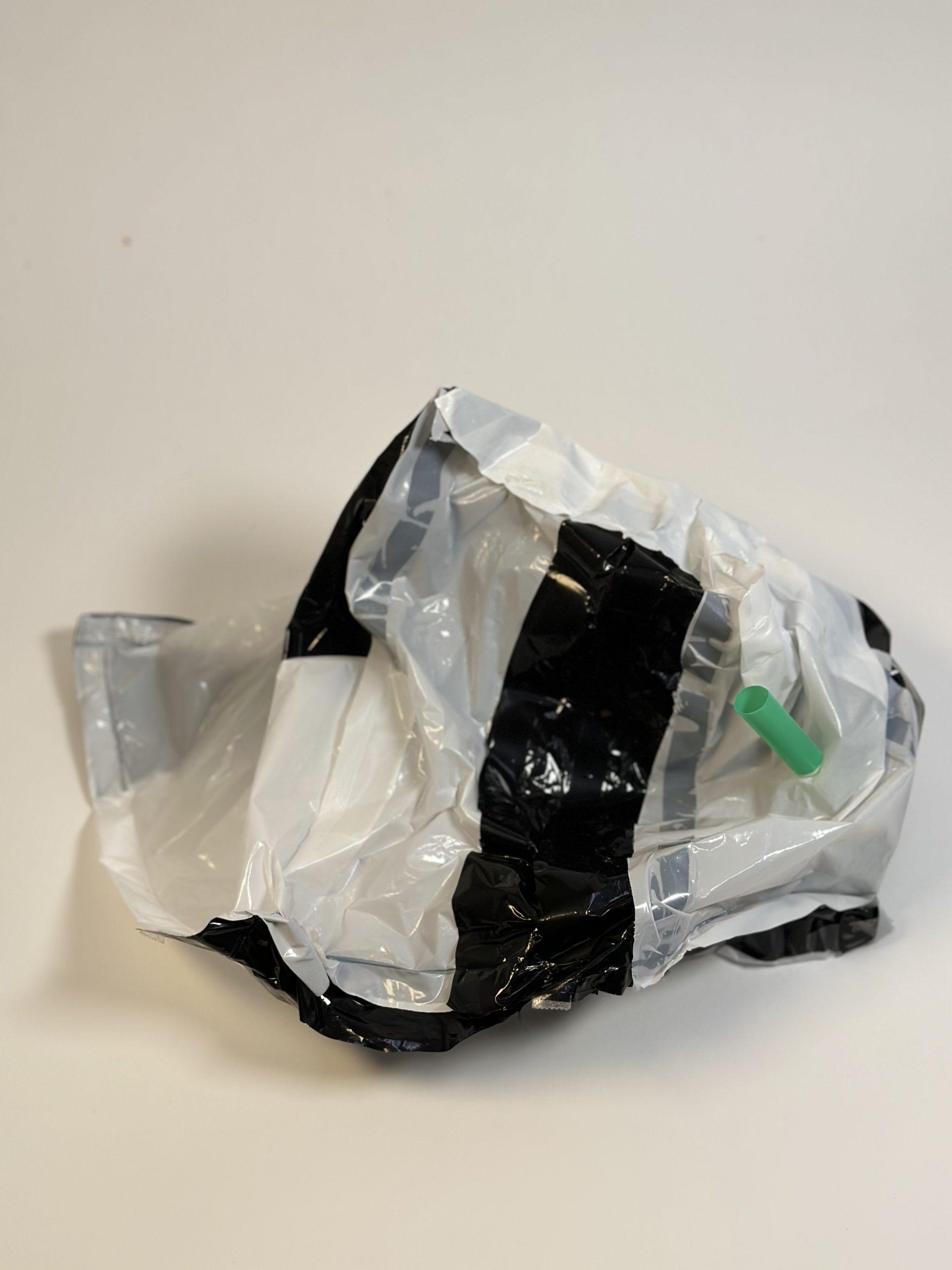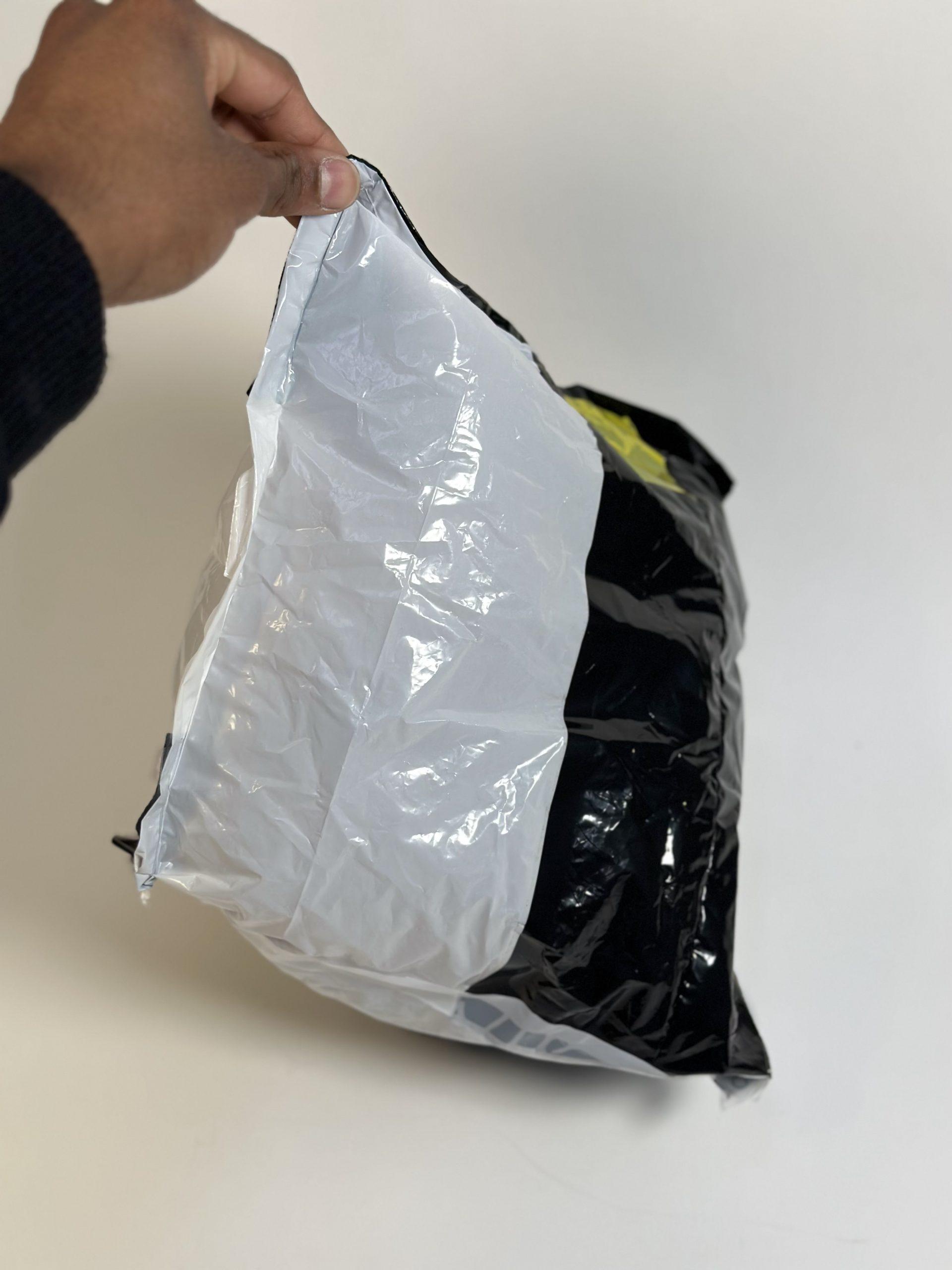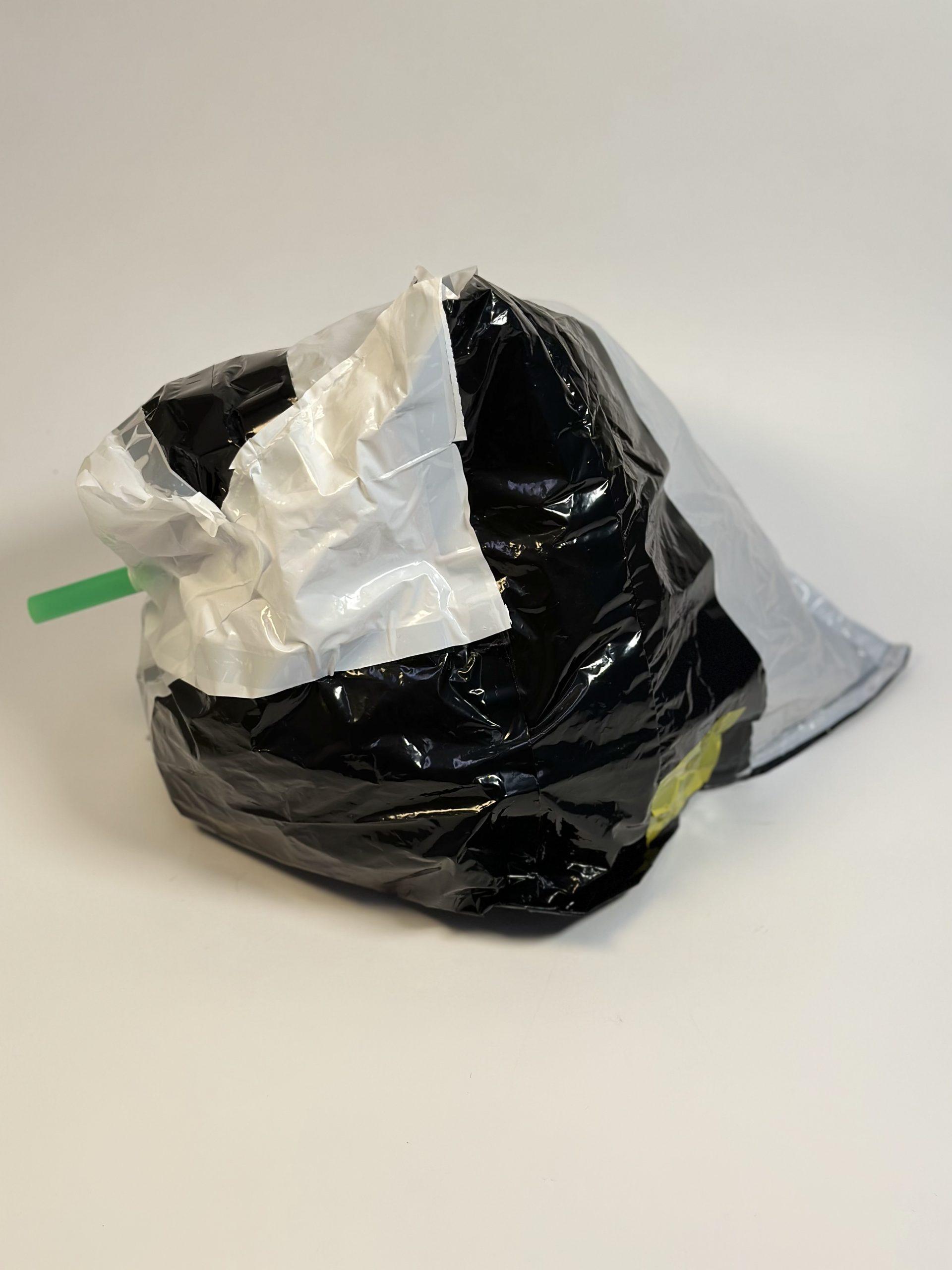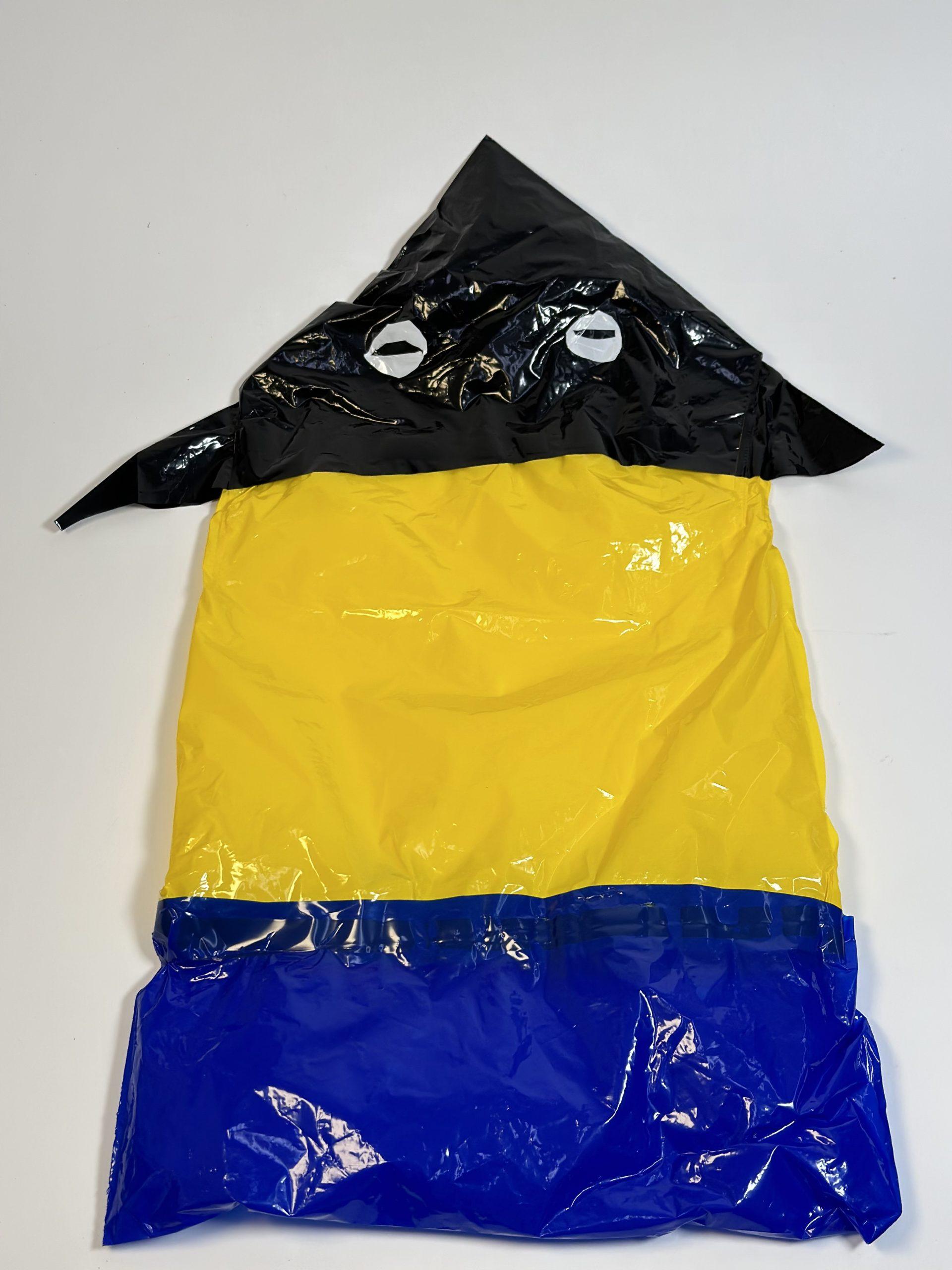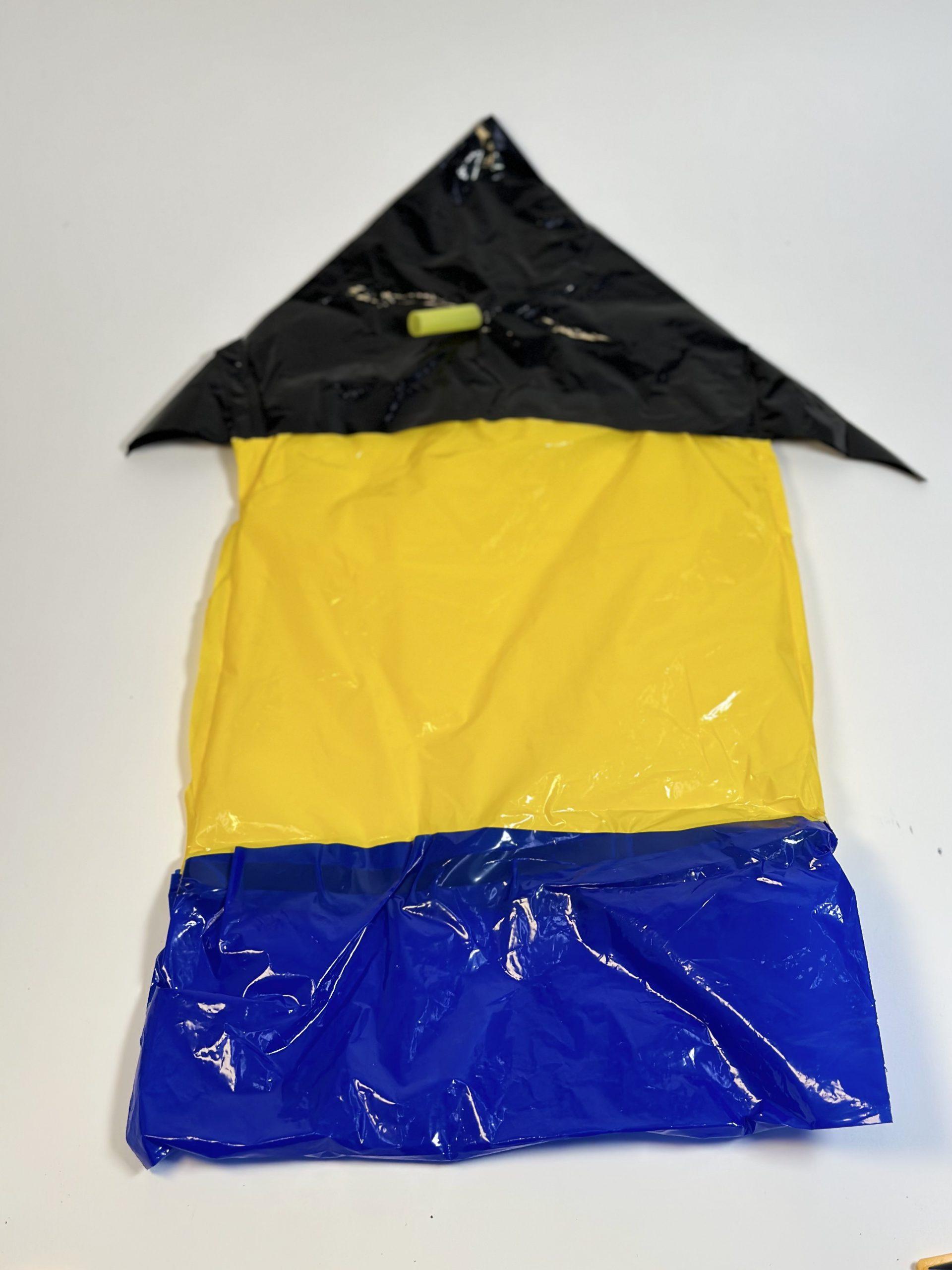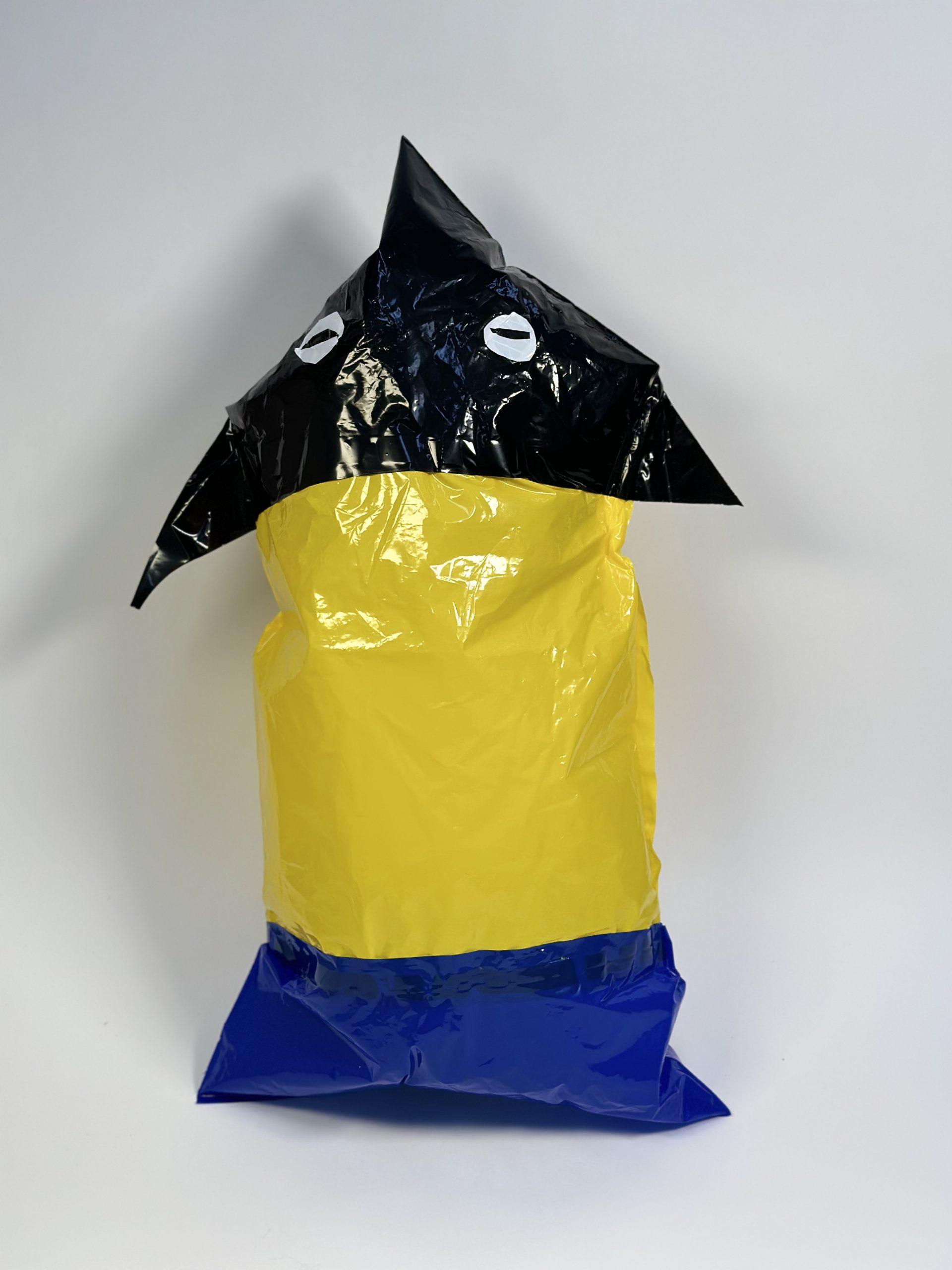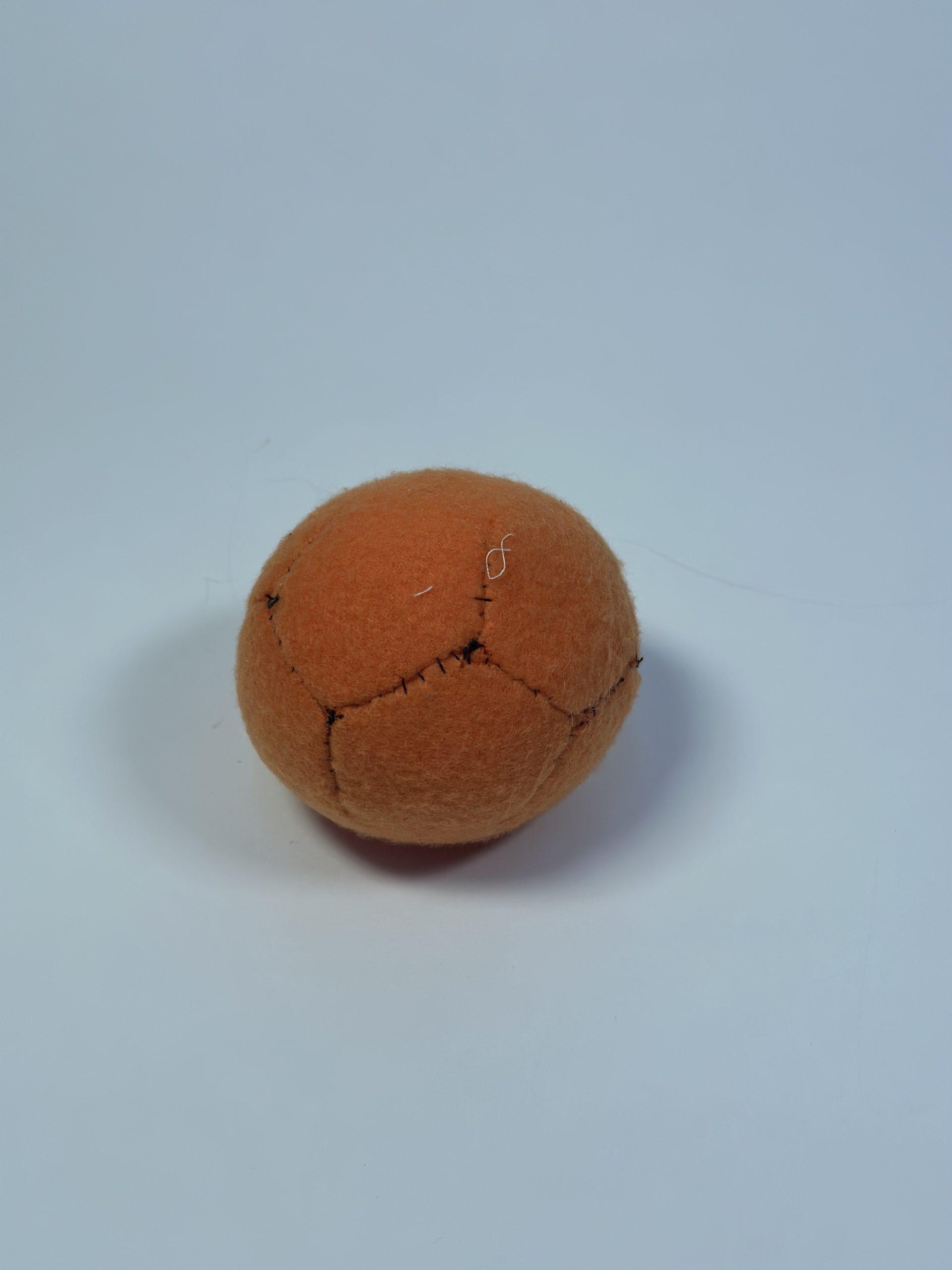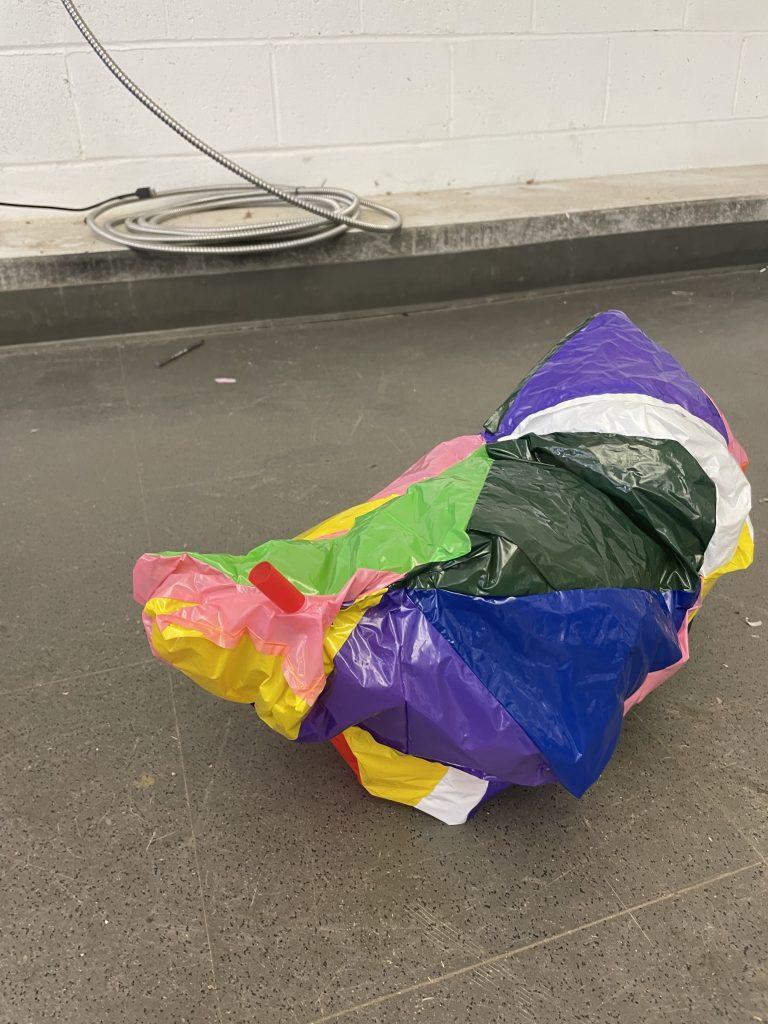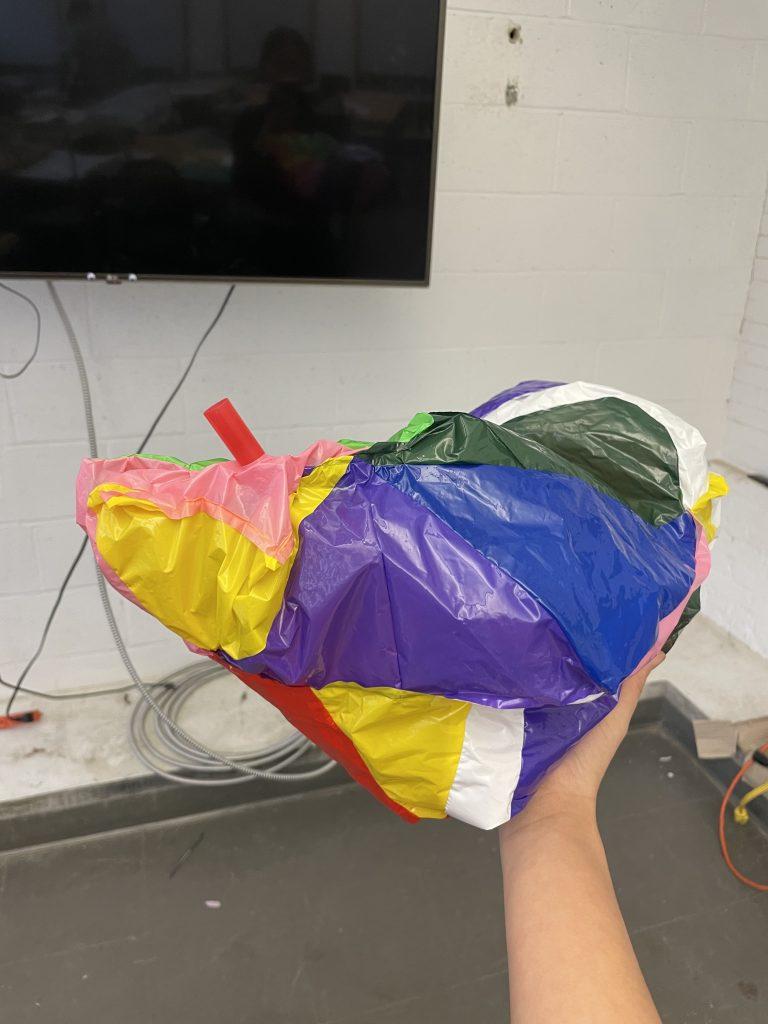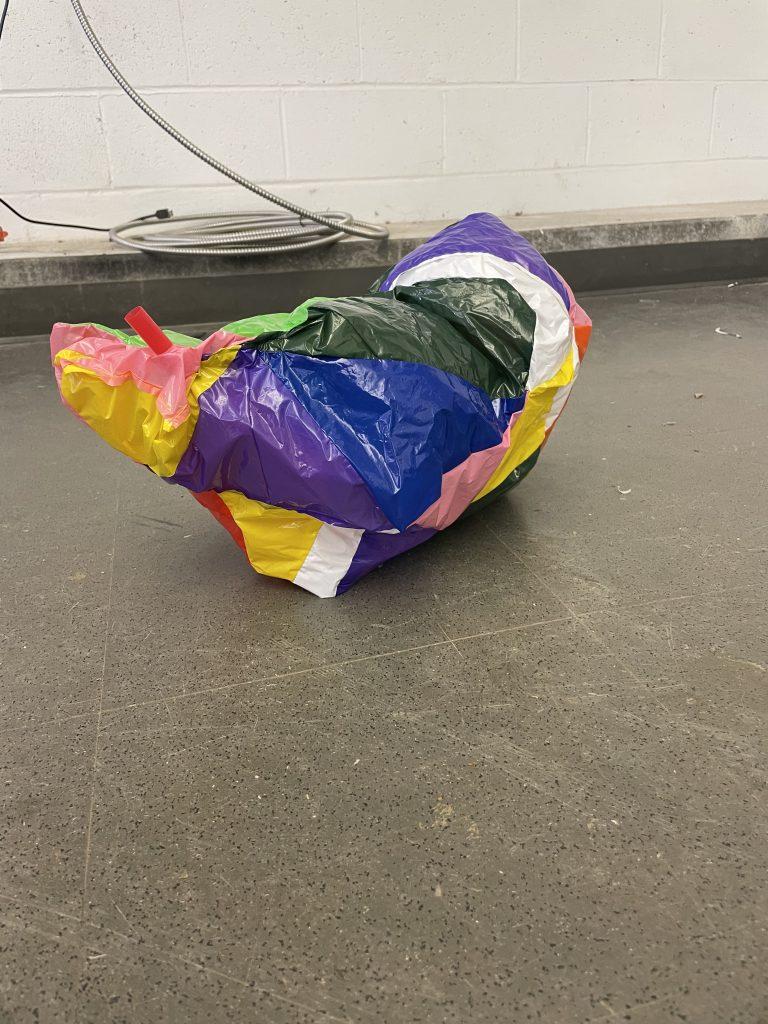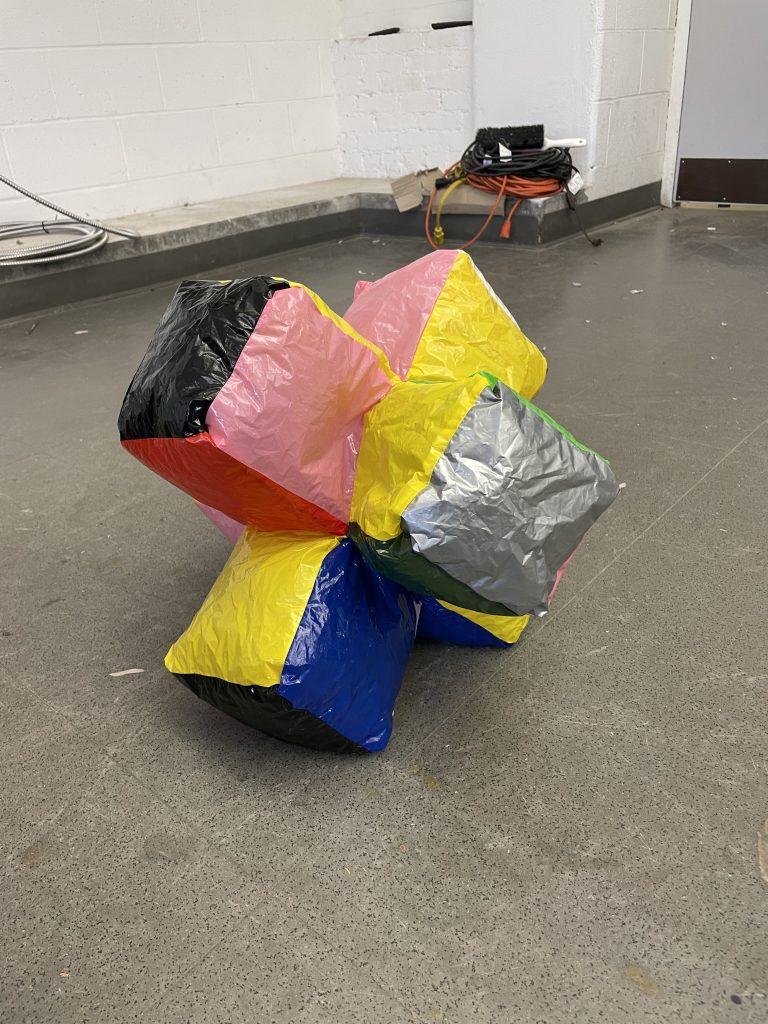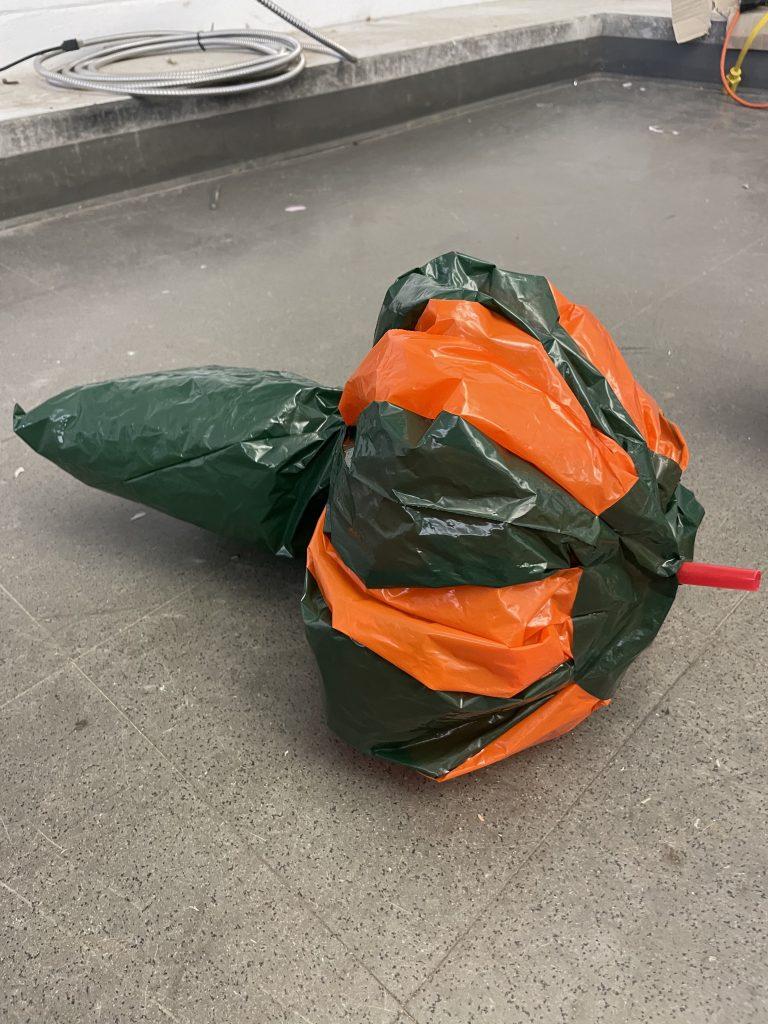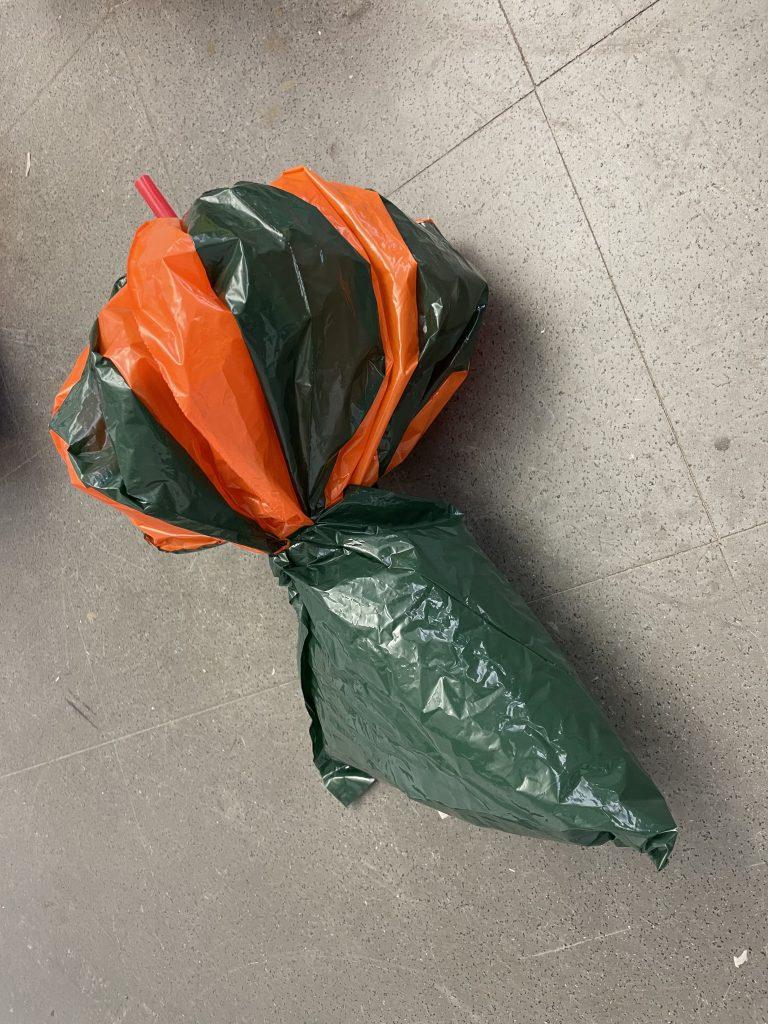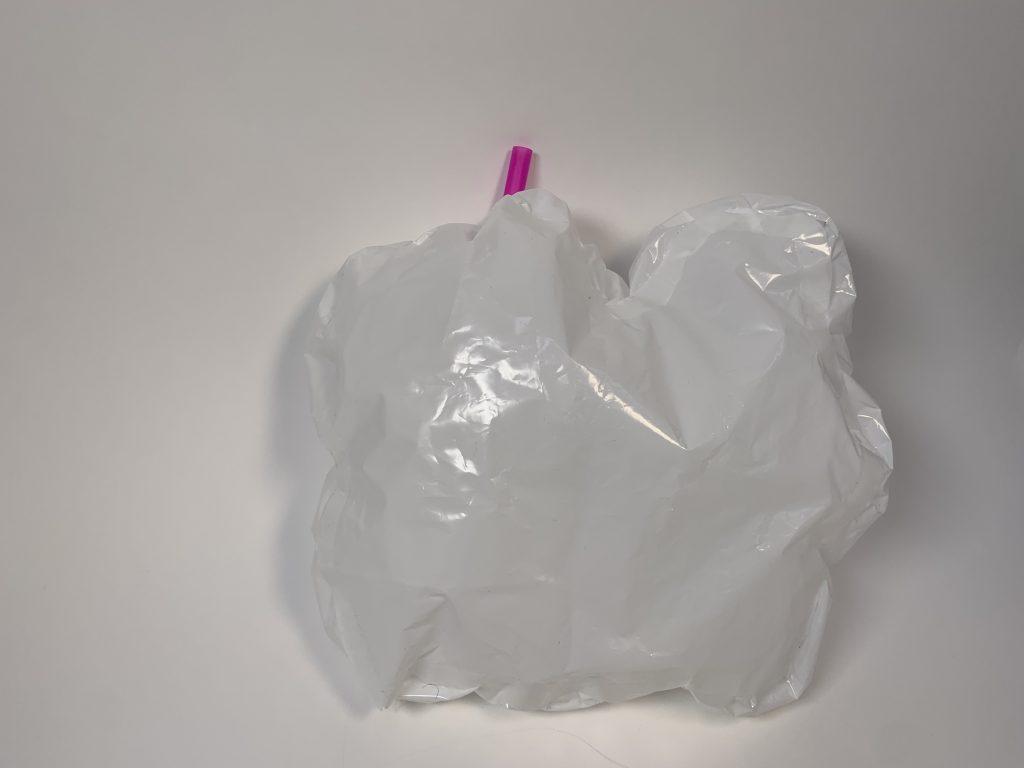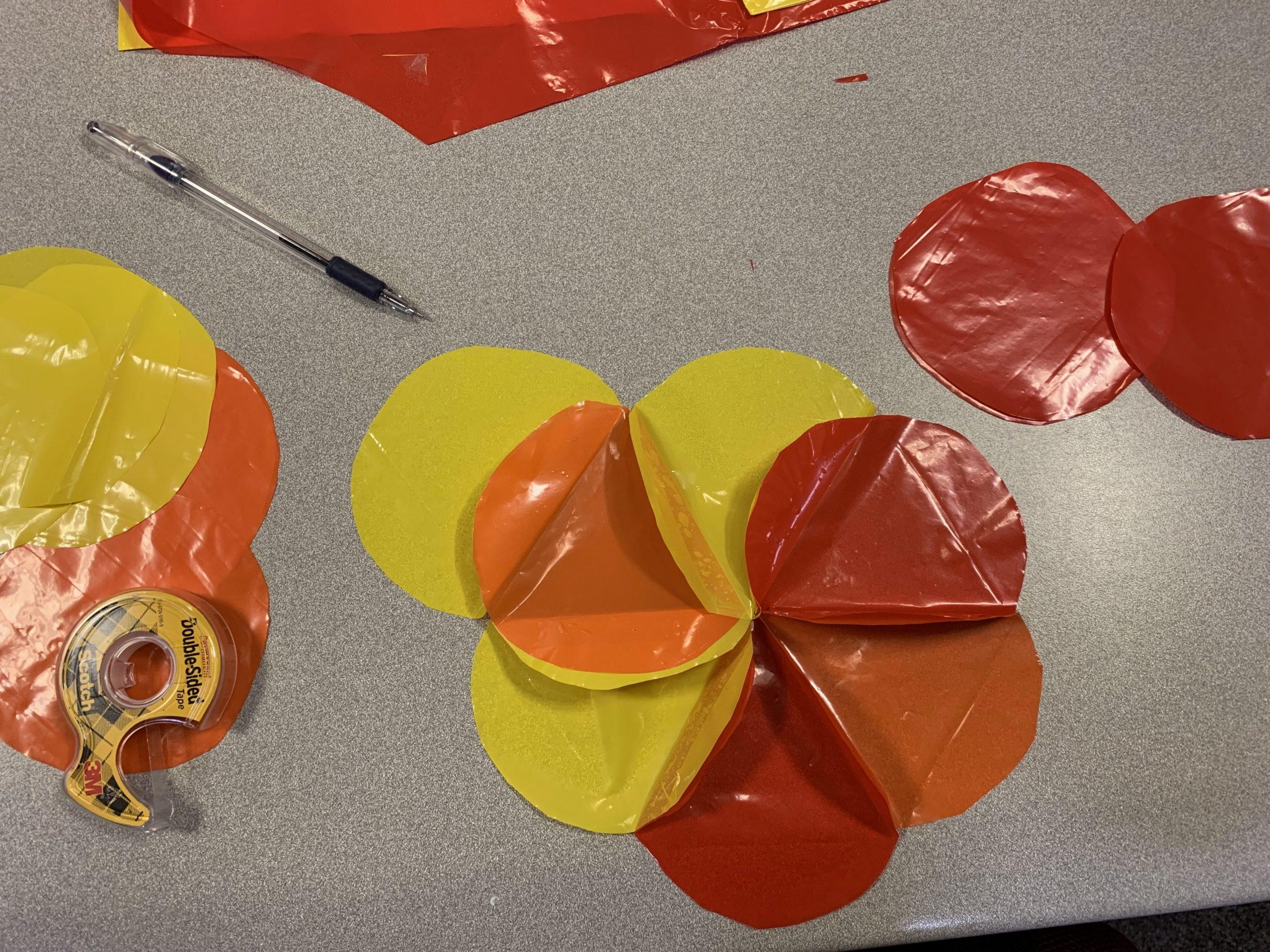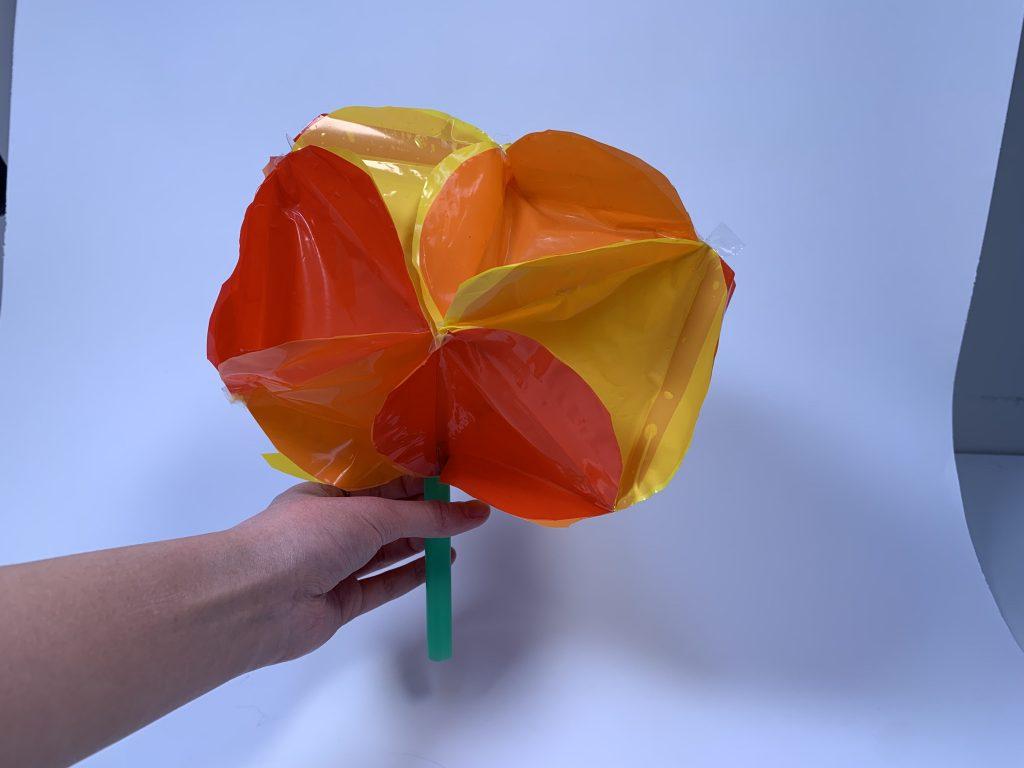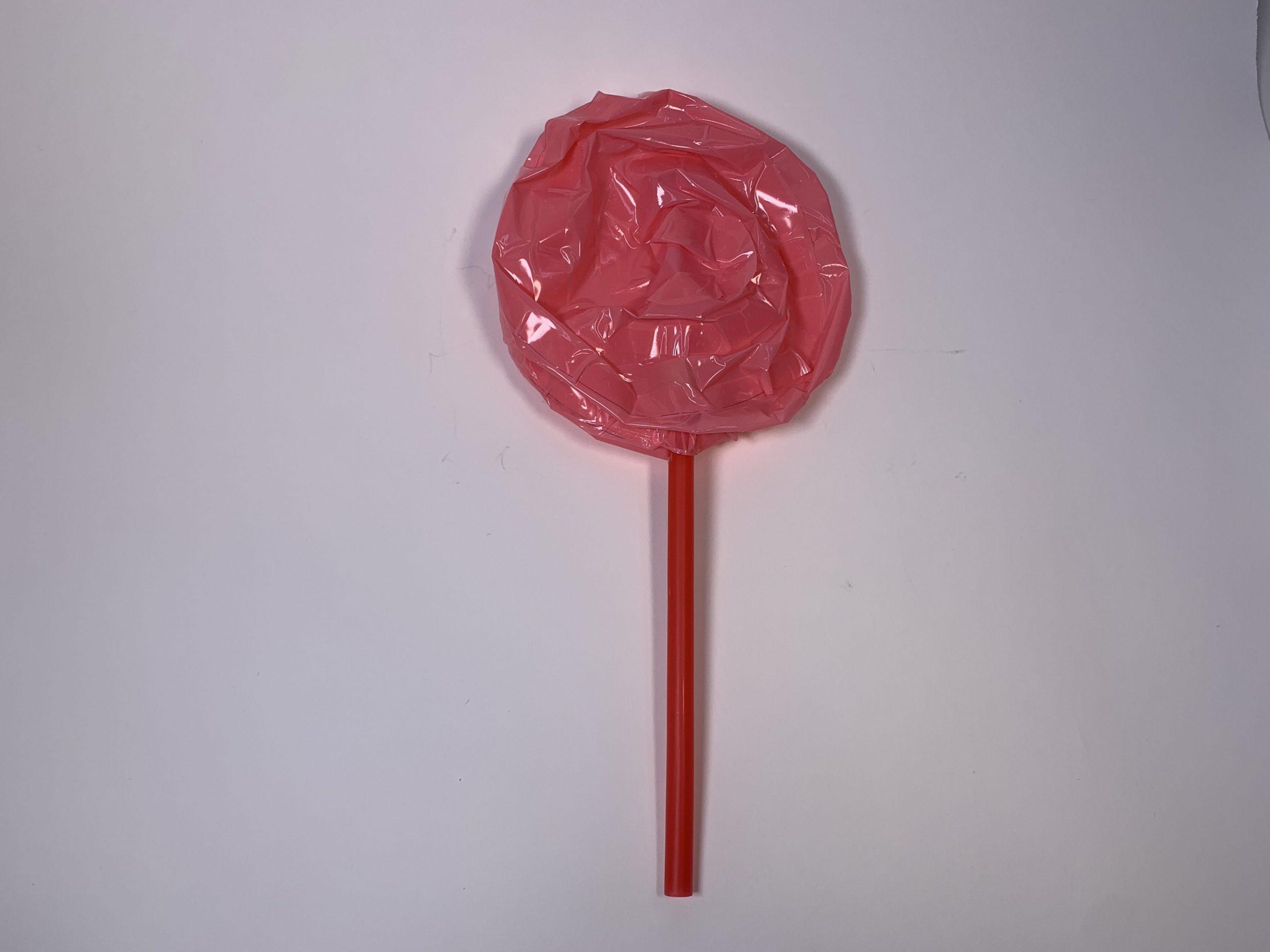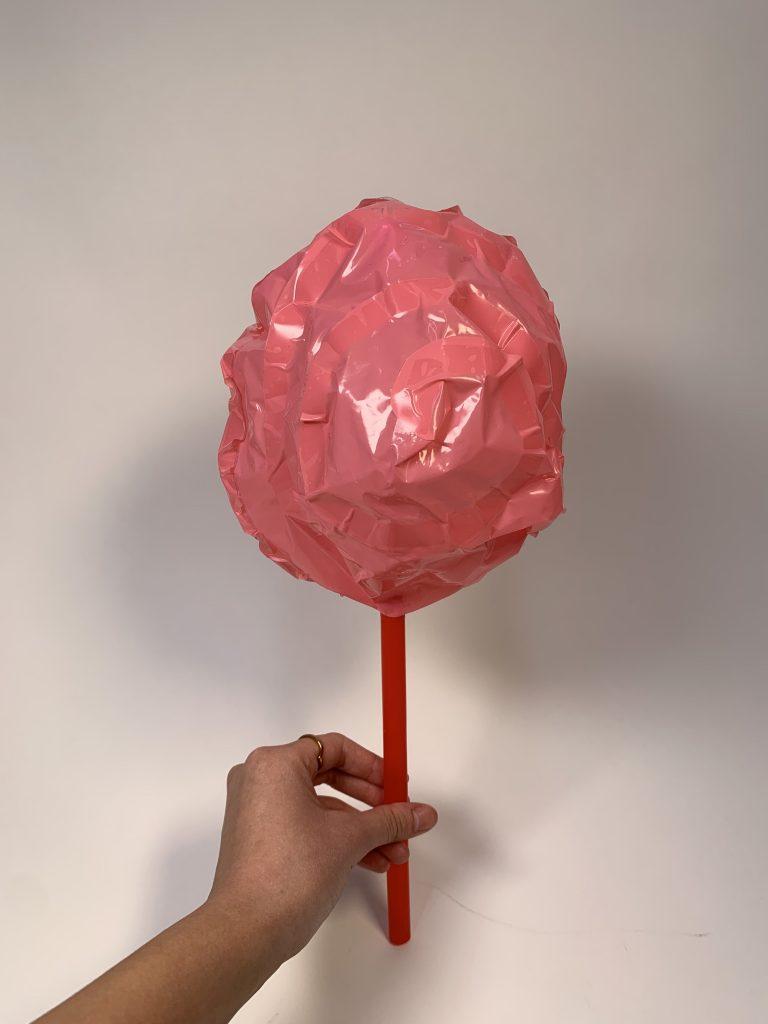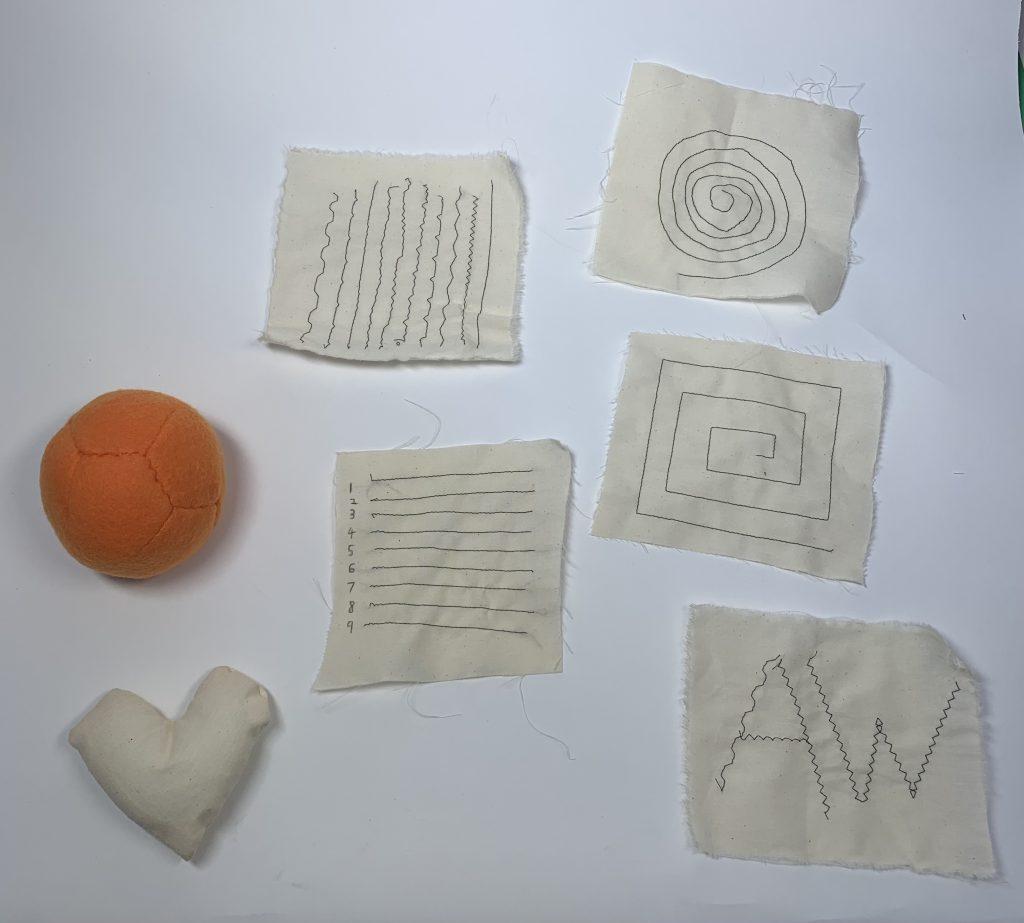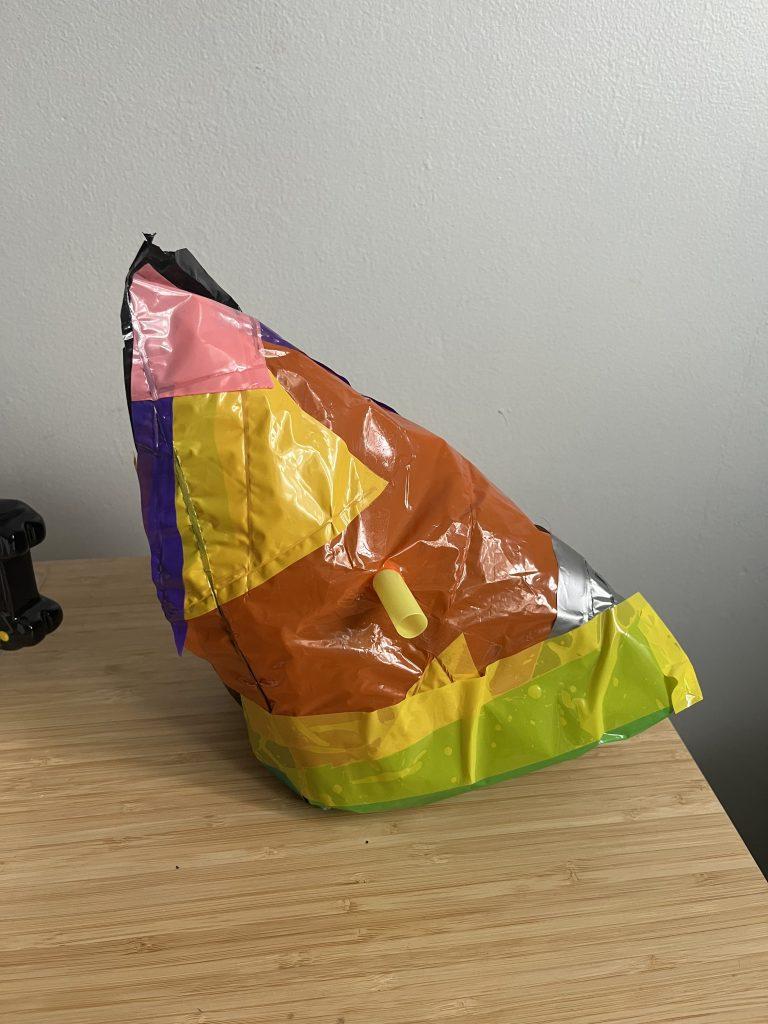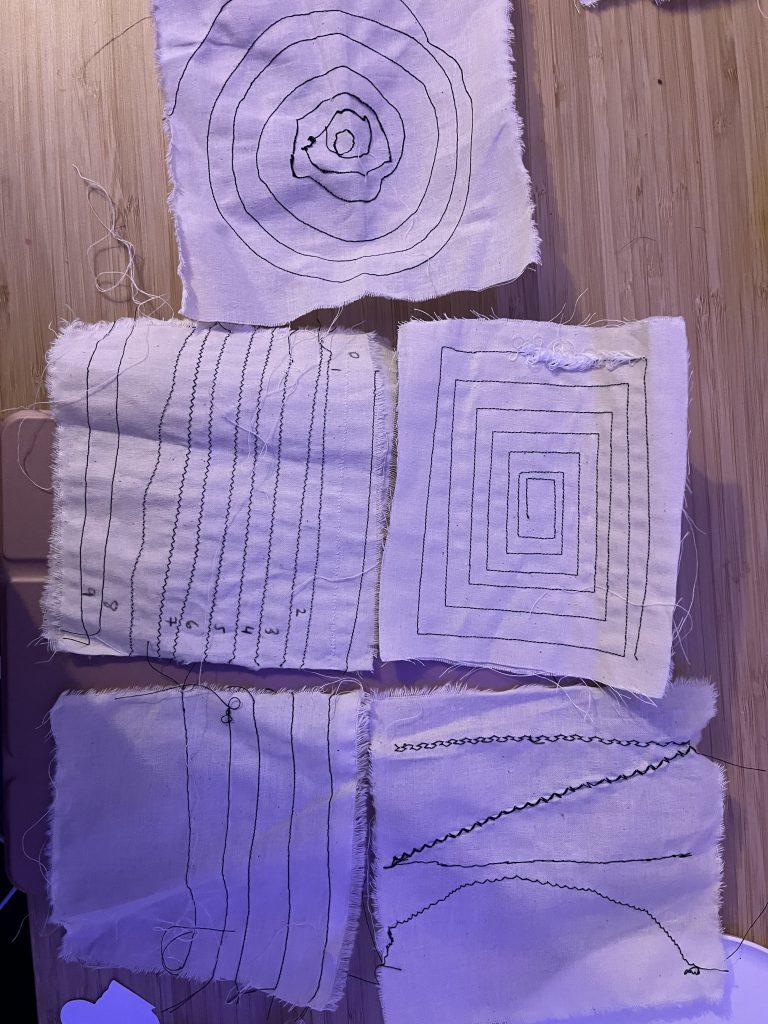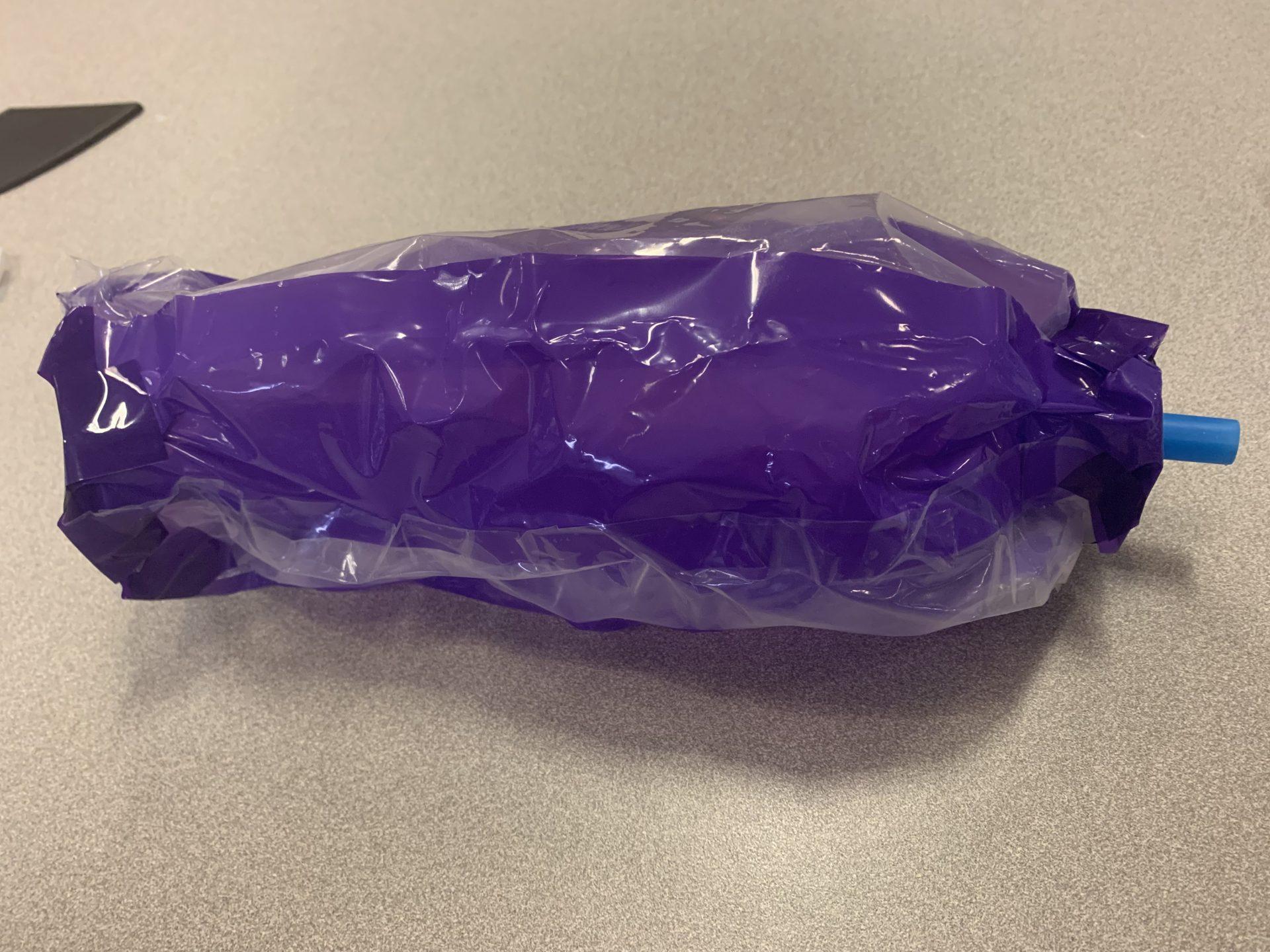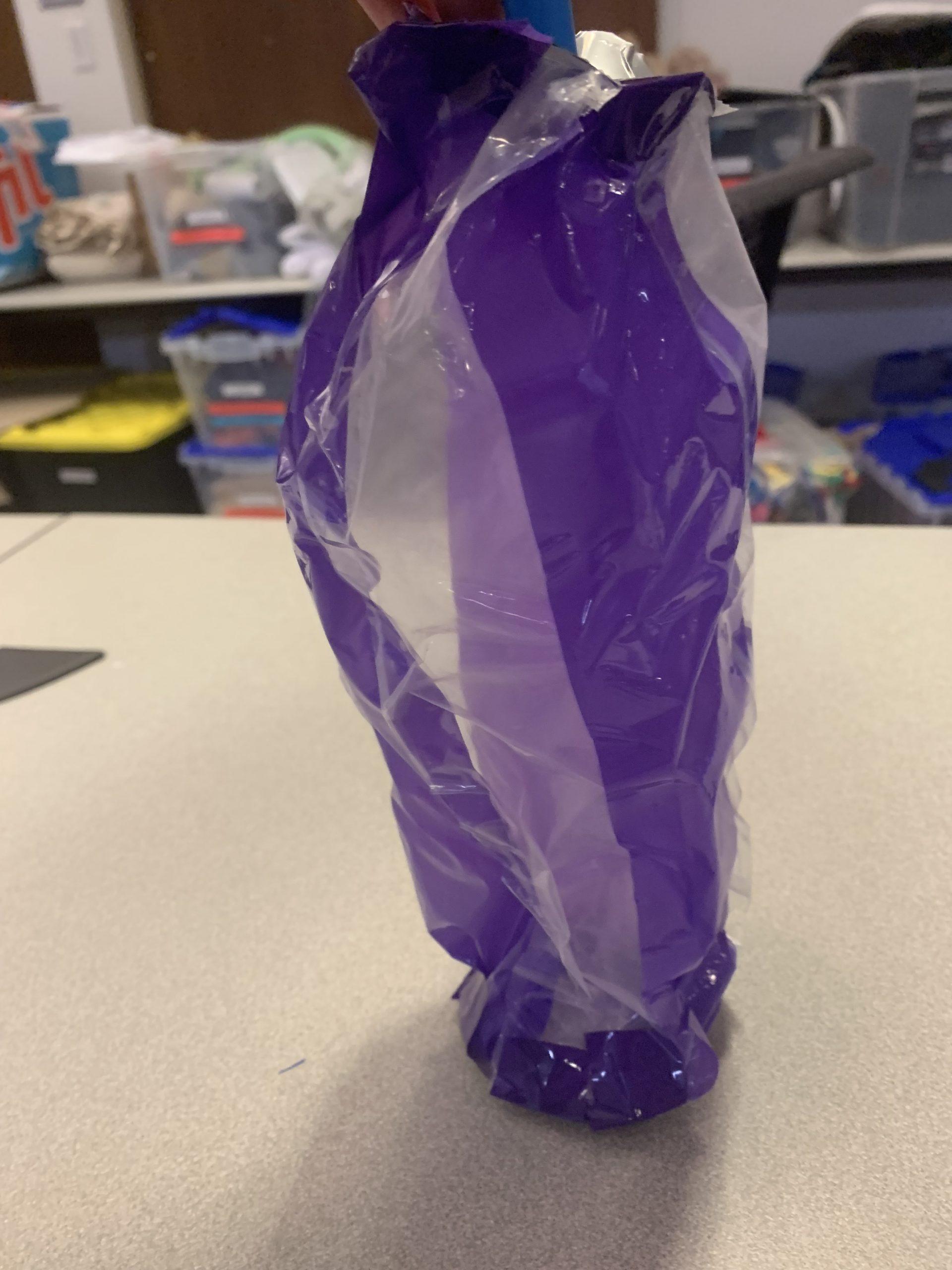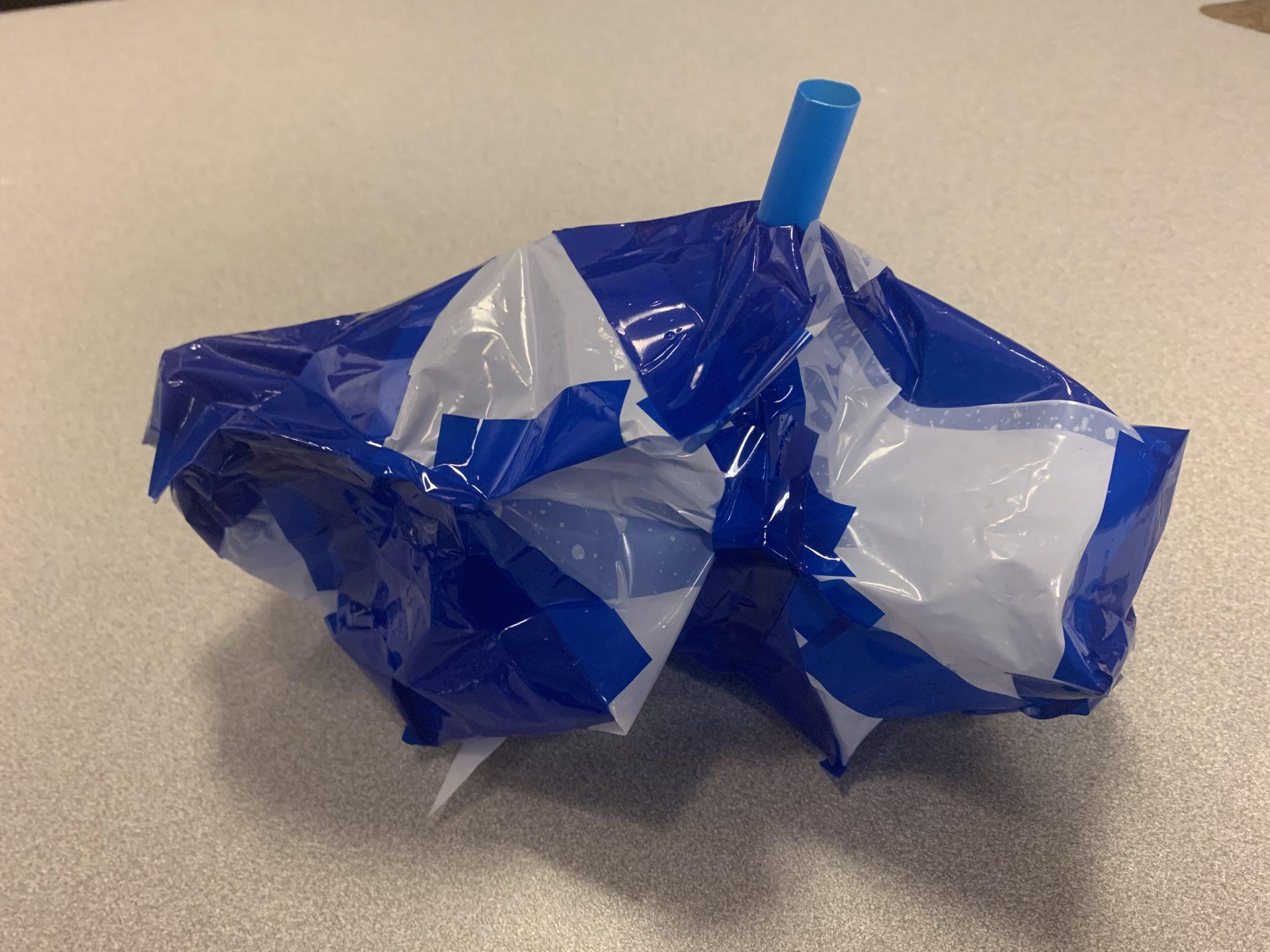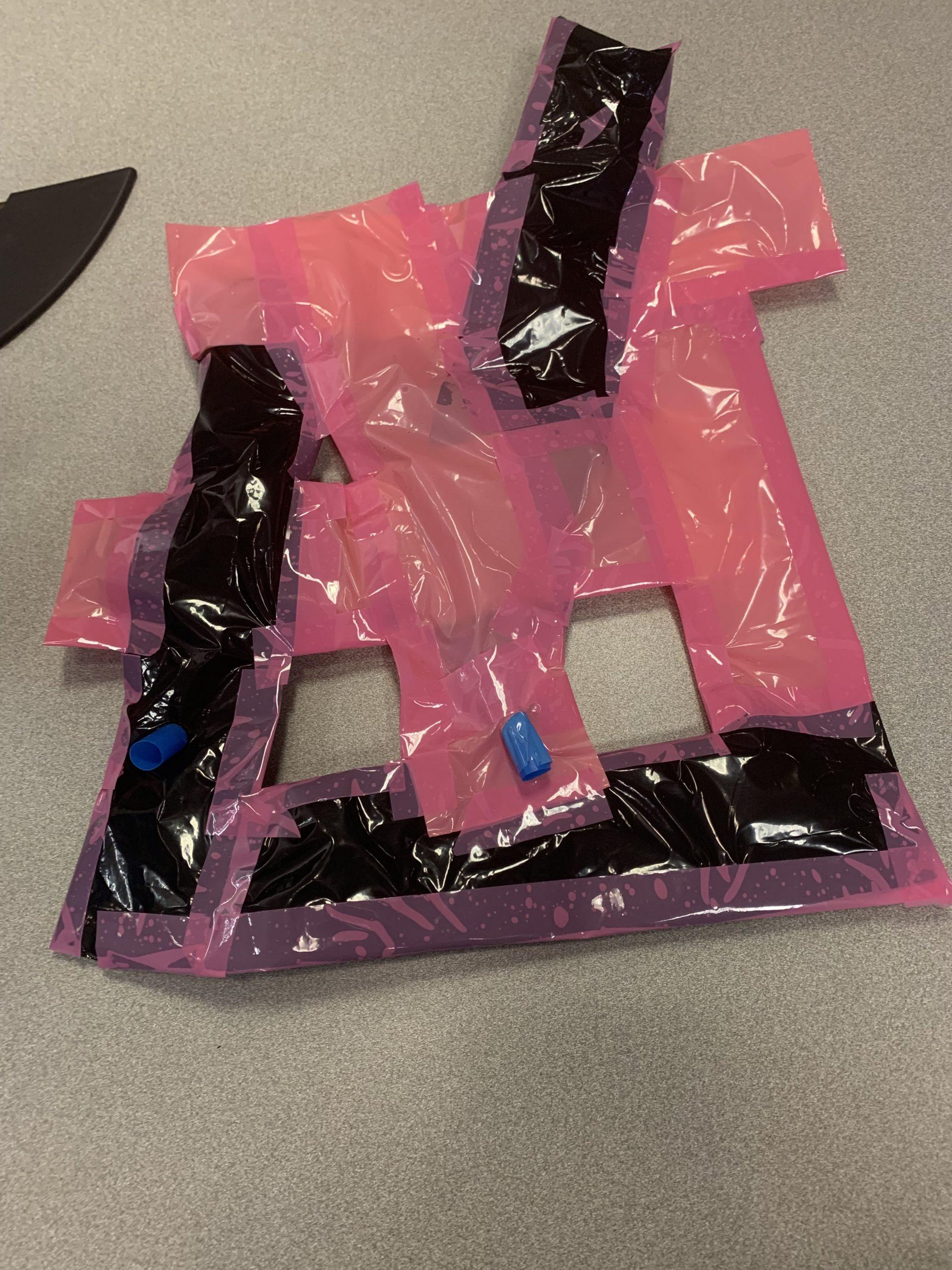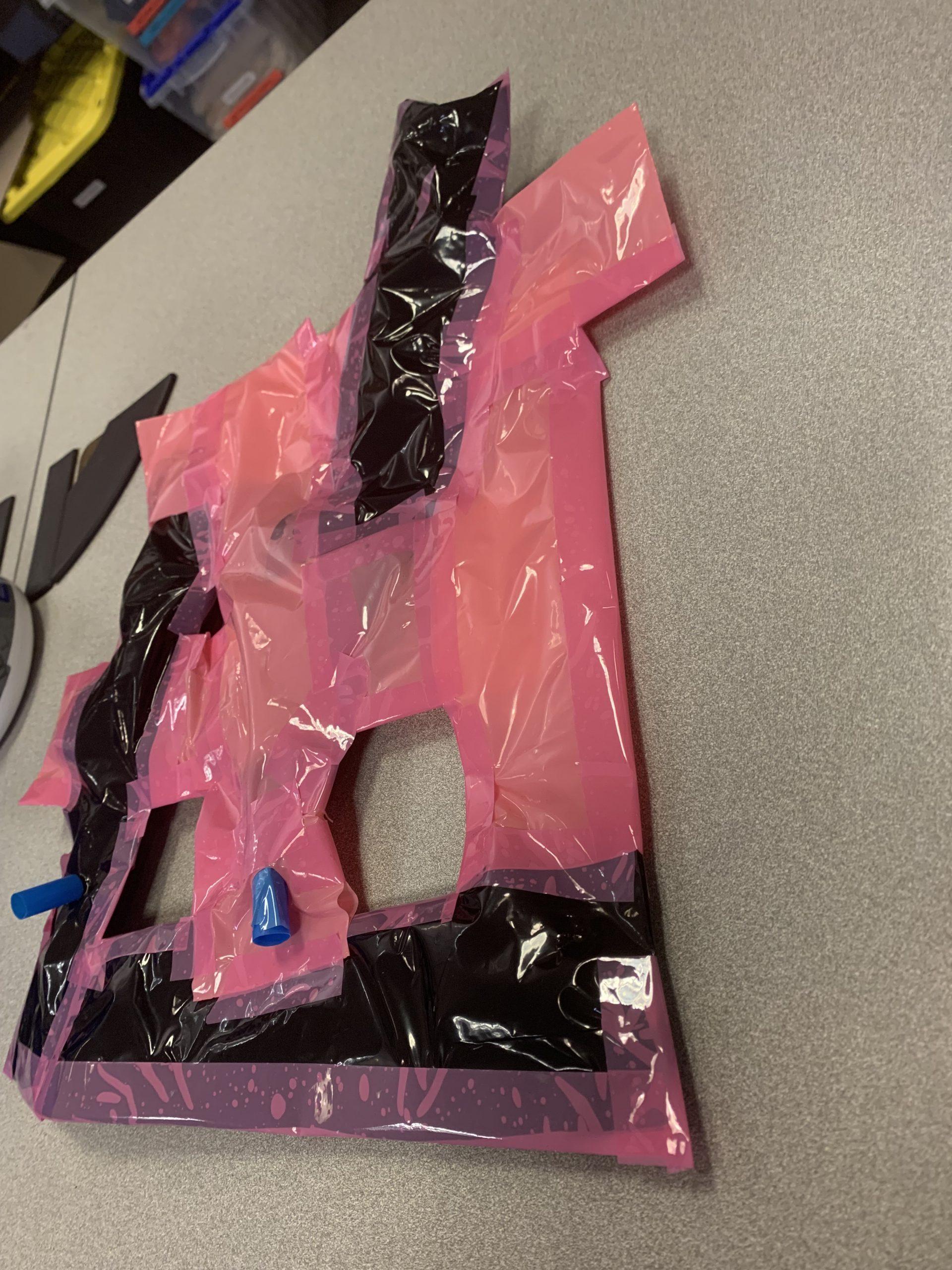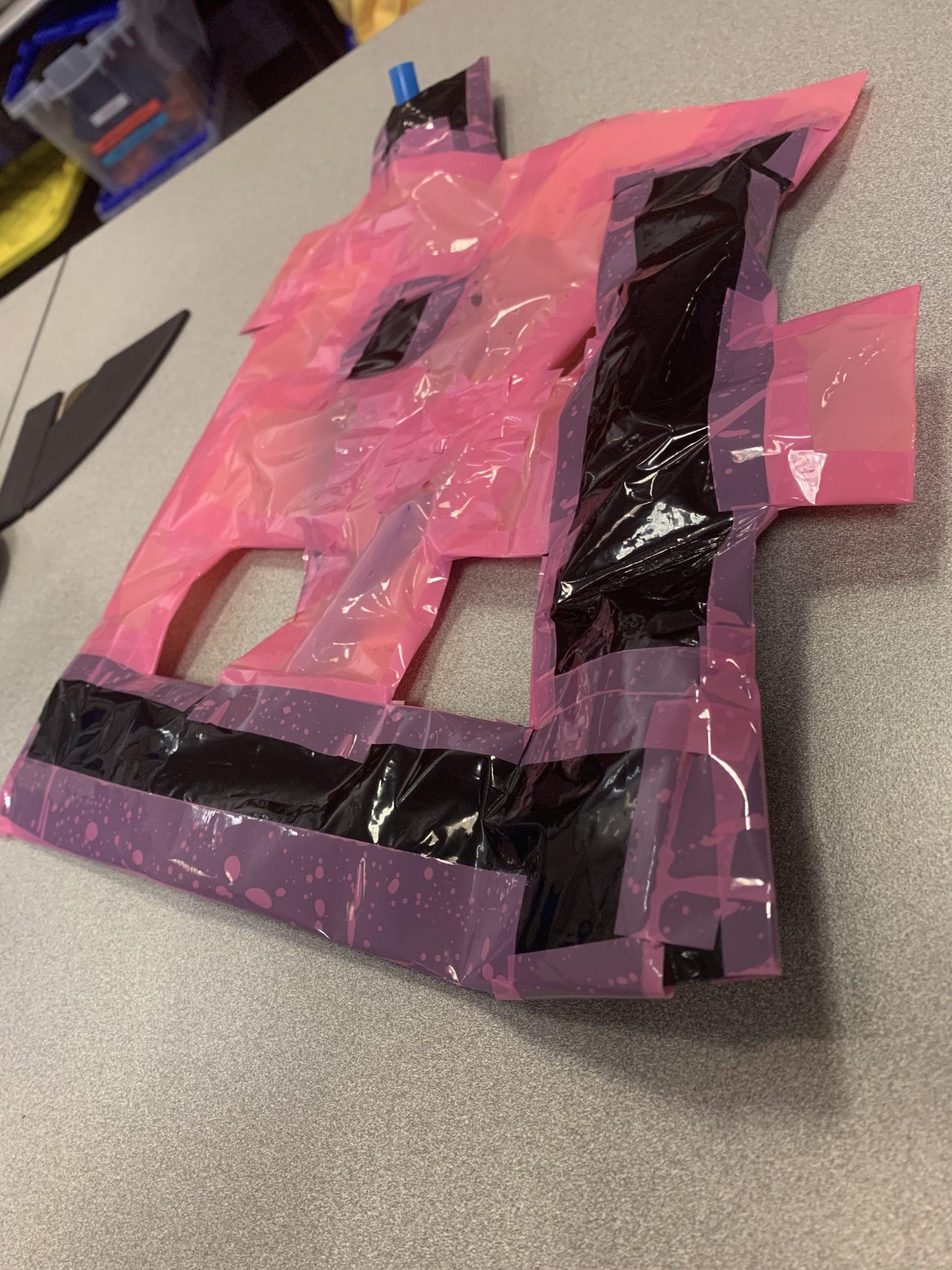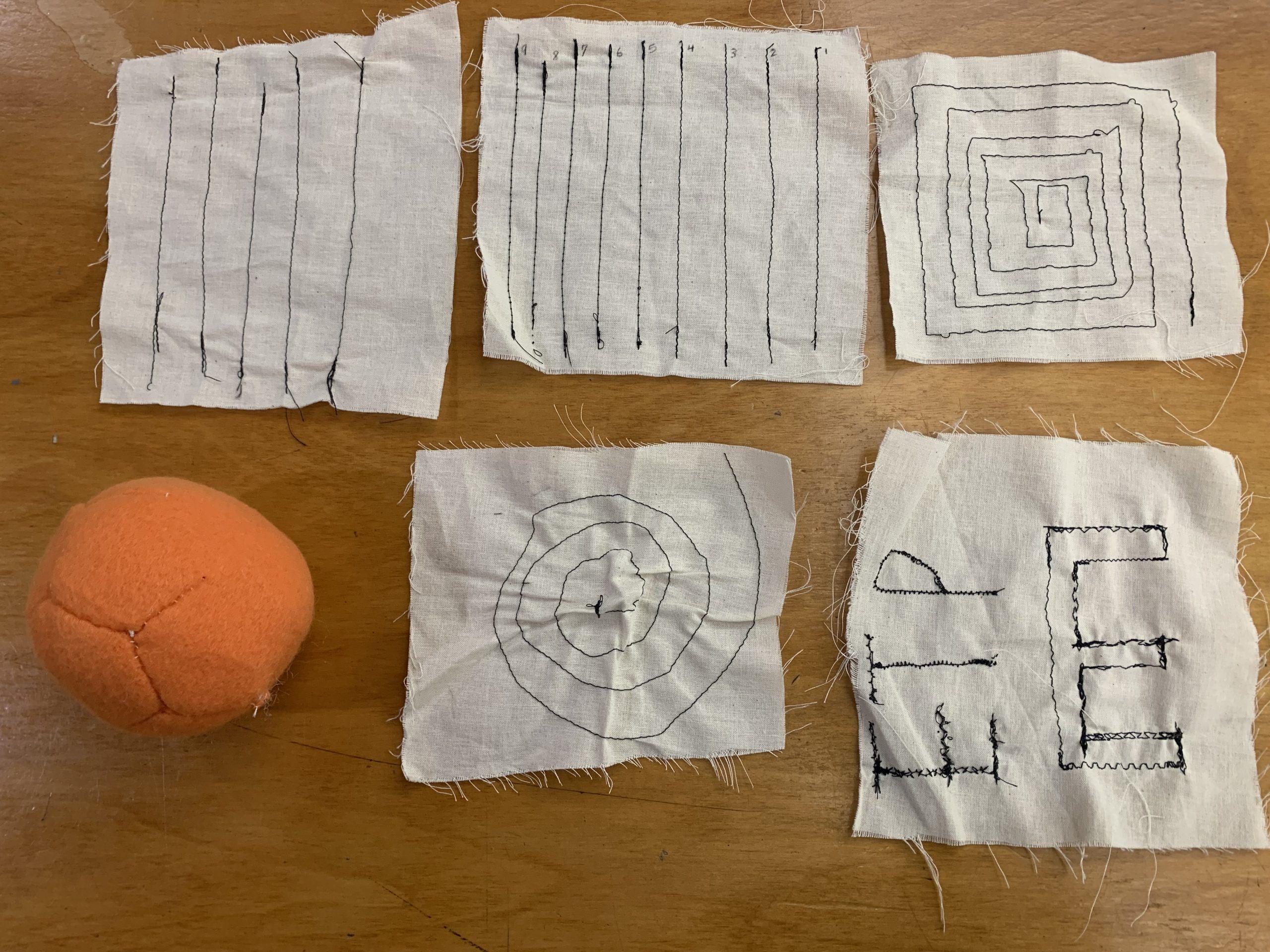Graana Khan
Inflatable 1
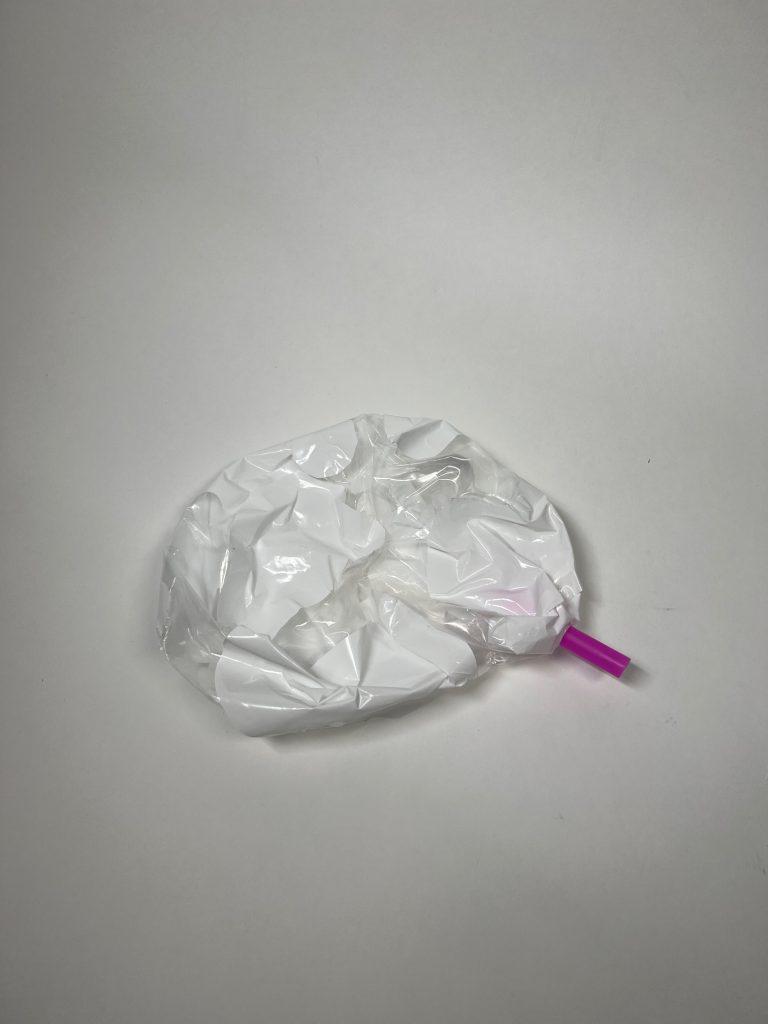
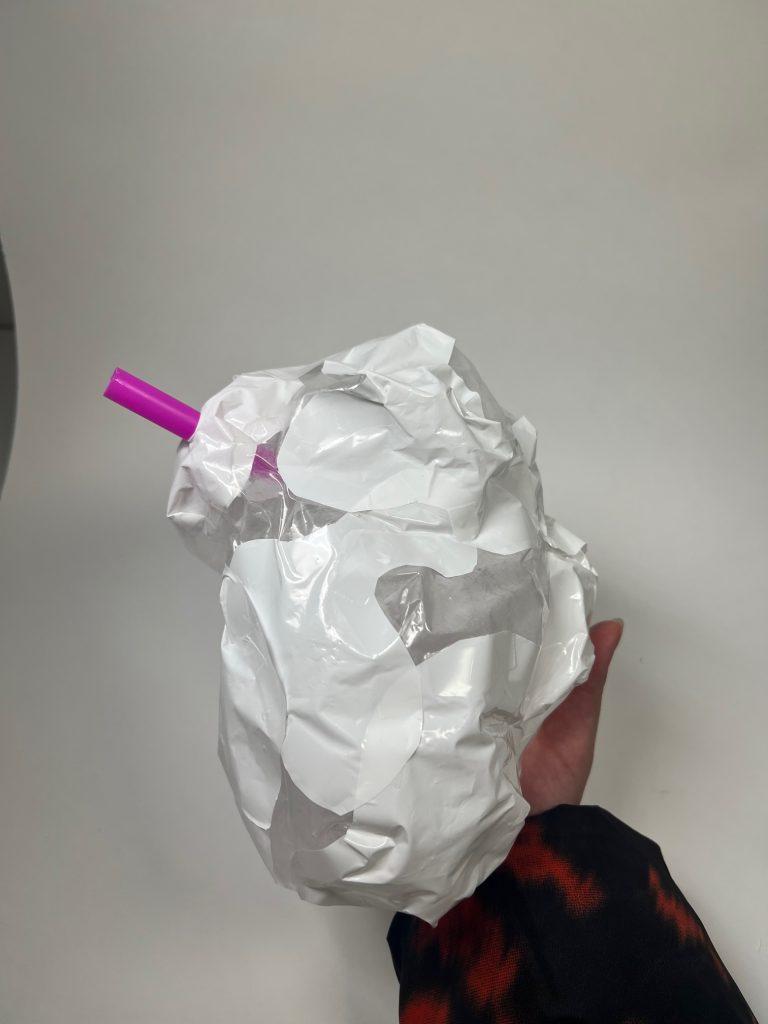
This first inflatable was made only from rounded and curved pieces, and taped together. My first challenge was getting the pieces to match because of the different tangents of the curves, as well as getting enough coverage from the tape along those curves. I liked the color palette in this one and the lightness of it. Although not my original intention, the overlaps of certain curves look interesting with the translucency of the plastic material.
Inflatable 2
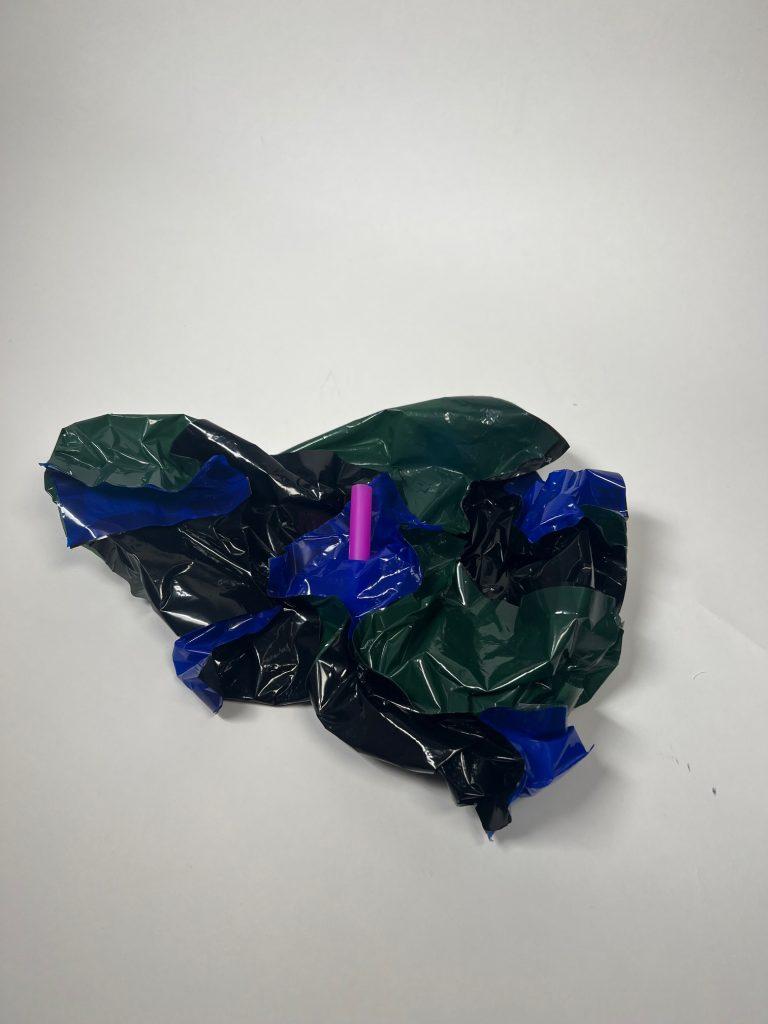
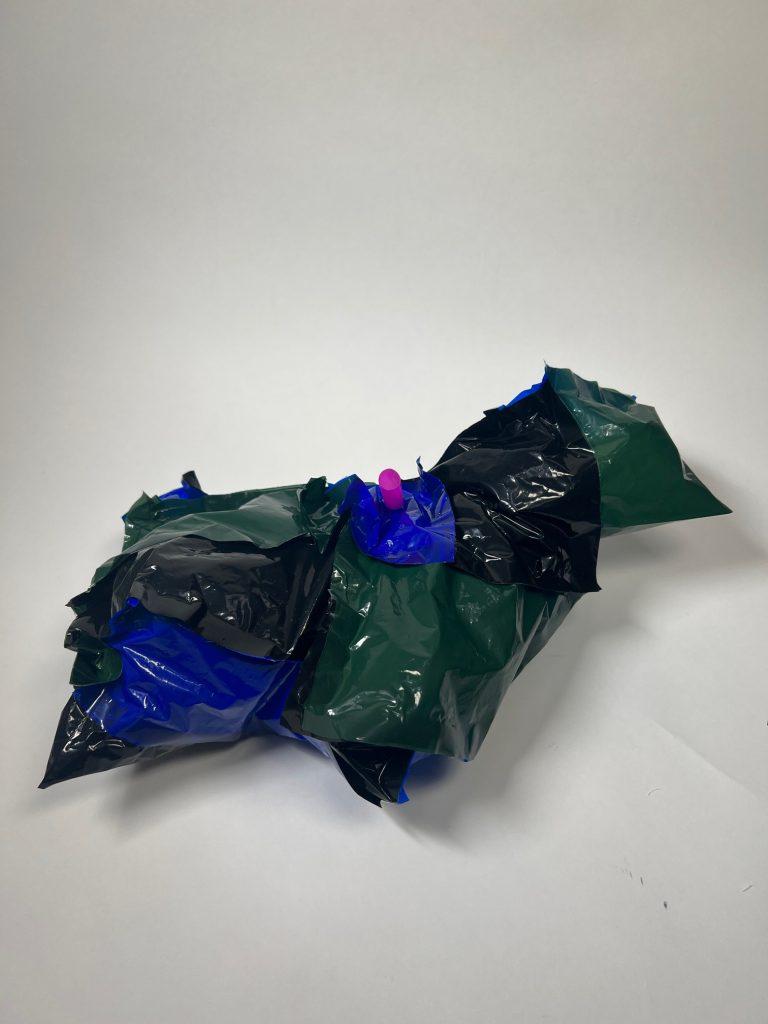
This was my second inflatable and I wanted to make a form that had all the seams facing outwards. I used only rectangle shaped pieces and double sided tape. I think this one had nice contrast to the first one in the way the seams added a sense of “sharpness” and edgy-ness to inflatables which typically are associated with being soft. This one also unintentionally ended up looking a bit like an animal.
Inflatable 3
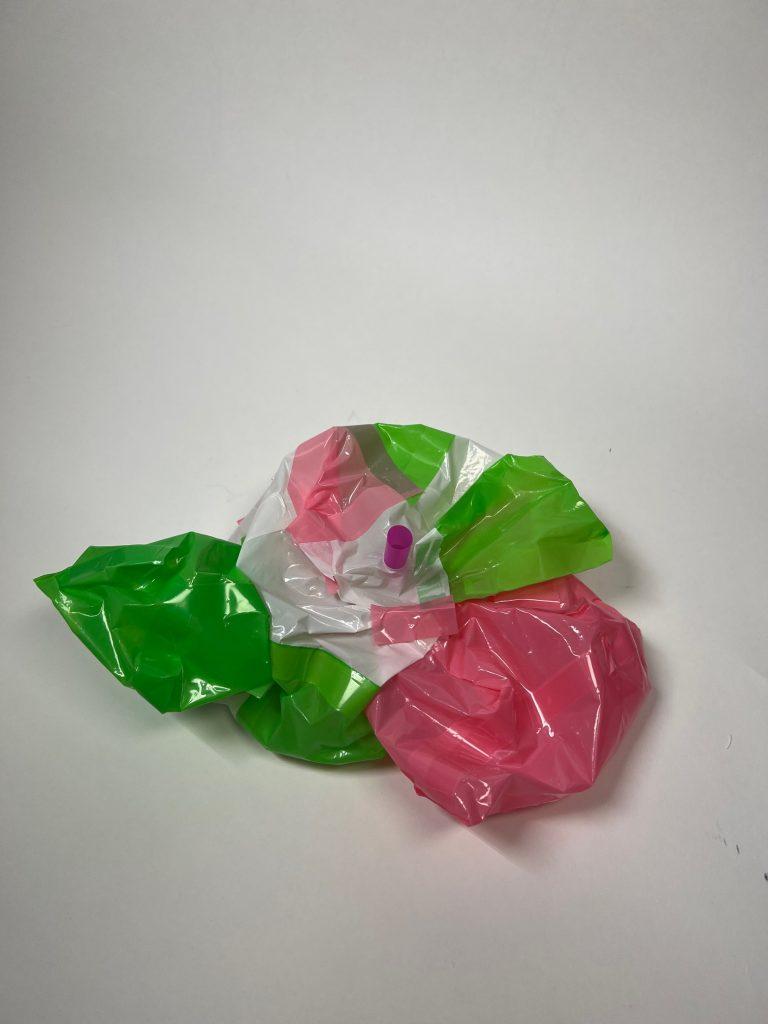

This was my third inflatable which used polygons and a mix of outward facing seams and inner seams. I also wanted to try attaching different forms together that were made separately. I made each form individually and then attached them together. Since there wasn’t a plan for any of my forms, I found it difficult to secure the pieces together without any gaps. I hadn’t planned for the connections of the 3 pieces so it was a challenge trying to get them stuck together. Still, I think the outcome is interesting and goes well with the balance of the 3 different colors.
Sphere
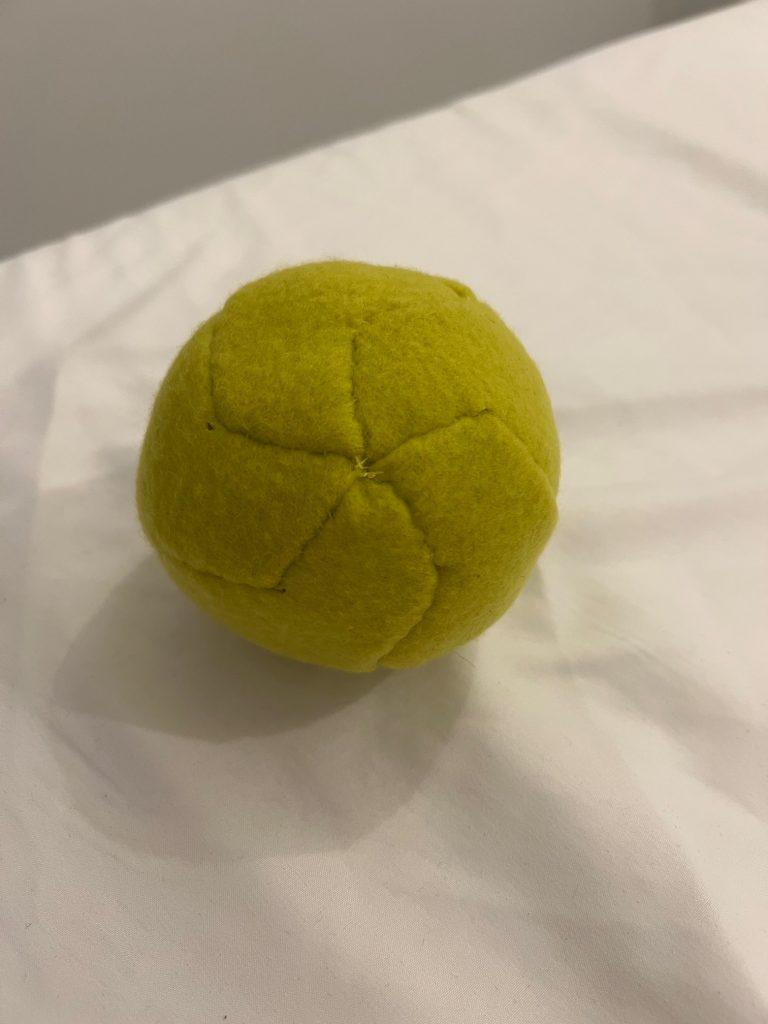

I used the zig zag pattern for the sphere. It was pretty intuitive once I looked at the instructions! My roommate’s dog also loved it.

